Murray Gell-Mann
description: an American physicist who received the Nobel Prize in Physics in 1969 for his work on the theory of elementary particles
80 results
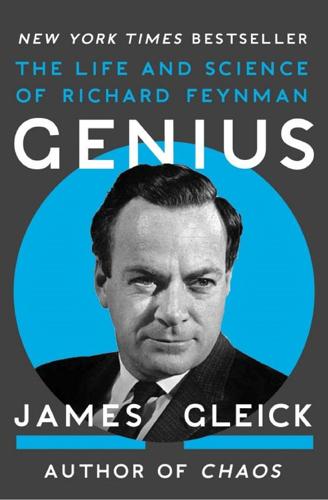
Genius: The Life and Science of Richard Feynman
by
James Gleick
Published 1 Jan 1992
It sold out quickly, and within weeks the publisher had a surprising best-seller. One unhappy reader was Murray Gell-Mann. His attention focused on Feynman’s description of the joy of discovering the “new law” of weak interactions in 1957: “It was the first time, and the only time, in my career that I knew a law of nature that nobody else knew.” Gell-Mann’s rage could be heard through the halls of Lauritsen Laboratory, and he told other physicists that he was going to sue. For late editions of the paperback Feynman added a parenthetical disclaimer: “Of course it wasn’t true, but finding out later that at least Murray Gell-Mann—and also Sudarshan and Marshak—had worked out the same theory didn’t spoil my fun.”
…
Brueckner, “The Production of Mesons by Photons,” Physical Review 79(1950):641. 275 THE UNREASONABLE POWER OF THE DIAGRAMS: Segrè 1980, 274. 276 LIKE THE SILICON CHIP: Schwinger 1983, 343. 276 PEDAGOGY, NOT PHYSICS: Ibid., 347. 276 YES, ONE CAN ANALYZE EXPERIENCE: Ibid., 343. 277 ALTHOUGH ‘ONE’ IS NOT PERFECTLY: Bernstein 1987, 63. 277 THEY ALSO WORRIED ABOUT SCHWINCER’S ABILITY: Sheldon Glashow, interview, Cambridge, Mass. 277 MURRAY GELL-MANN LATER SPENT A SEMESTER: Murray Gell-Mann, interviews, Pasadena and Chicago. 278 THERE WAS A NEW NOTE: E.g., Virginia Prewett, “I Homesteaded in Brazil,” Saturday Evening Post, 22 April 1950, 10, began, “It’s going to be the first atomic-bomb shelter in the New World.” Cf. F-W, 551. 278 AT LEAST A 40 PERCENT CHANCE OF WAR: Wheeler to Feynman, 29 March 1951, CIT. 278 WHEN A BRAZILIAN PHYSICIST: Lopes 1988; J.
…
Bradley, 13 July 1984, CIT. 409 OKAY, START YOUR WATCH: Weiner, interview. 409 A RECORD OF THE DAY-TO-DAY WORK: F-W, II-4. 410 TODAY I WENT OVER TO THE HUNTINGTON: F-L. 410 AND THE NEXT MORNING, ALL RIGHT: Ibid. 411 “LISTEN,” I SAID TO THE DISPATCHER: SYJ, 236. 411 A NICE BROOKLYN RING: Edwin Barber to Feynman, 2 March 1984, CIT. 411 GELL-MANN’S RAGE COULD BE HEARD: E.g., Tuck, interview. 411 OF COURSE IT WASN’T TRUE: SYJ, 229. He also changed “Murray Gell-Mann and I wrote a paper on the theory” to “Murray Gell-Mann compared and combined our ideas and wrote a paper on the theory” (232). Gell-Mann still called it “that joke book.” He knew that Feynman had not deliberately tried to take undeserved credit, but he was hurt nonetheless. “He was not at all a thief of ideas—even very generous in some ways,” Gell-Mann said.
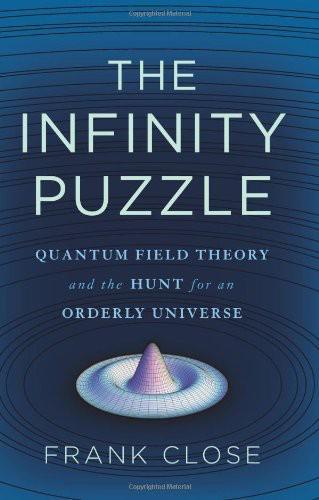
The Infinity Puzzle
by
Frank Close
Published 29 Nov 2011
The classification of the weak force appeared a mess, the results of some experiments hinting at S or T, while others preferred V or A. Clarity came with a rush. The experiments claiming S or T turned out to be flawed, and new experiments favored a combination of V and A. Marshak discussed the matter with several colleagues, including Murray Gell-Mann, a young theorist who would almost single-handedly redefine the frontiers of particle physics. However, that would come later, as we shall see. Meanwhile, unaware of these developments, Richard Feynman had been traveling in Brazil that summer and also had realized that V – A offered a mathematically tantalizing, though apparently empirically useless, possibility.
…
The arrival of V – A as the classification of the weak interaction by 1957 inspired not just Ward but also others to realize that latent within the Yang-Mills equations was a possibility for physics to make a great advance. However, it would turn out that there are many possible paths through the Yang-Mills jungle. Murray Gell-Mann, who also had recognized the V – A option, spent a considerable amount of 1958 and ’59 trying to unite weak and electromagnetic forces but failed to find a model that would fit all the facts.12 Salam and Ward, however, were relatively slow in getting together and developing the idea. As we shall see, their first try did not agree with nature.
…
This episode was an extreme example, Salam claiming that as a result he never again read any of Glashow’s papers, although he himself later admitted that this was a mistake.9 Glashow wisely dropped his wild claim that the theory was renormalizable, but continued with his pursuit of a unified theory. Fortune came his way the next year, 1960, following a seminar that he gave in Paris, attended by Murray Gell-Mann. Gell-Mann was only three years older than Glashow but already had a huge reputation. By the age of thirty he had introduced the concept of “strange” particles, to explain the bizarre phenomena being discovered in cosmic rays; he was already en route to the grand classification scheme that would group the strong interacting particles—hadrons—into families, eventually explaining them as composed of more basic particles called quarks, and he had developed a method of 116 the infinity puzzle calculation known as current algebra to account for the behavior of these particles.
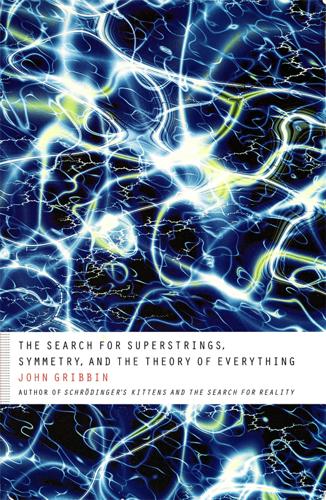
The Search for Superstrings, Symmetry, and the Theory of Everything
by
John Gribbin
Published 29 Nov 2009
But although the impetus for finding patterns among the properties of hadrons came partly from ideas developed in the context of field theory in the 1950s, the ‘periodic table’ of the particles stood on its own merits, as a classification system like Mendeleev's table, at the start of the next phase of development of particle physics. The classification system was arrived at independently by two physicists, the American Murray Gell-Mann (born in 1929) and the Israeli Yuval Ne'eman, born in 1925. Ne'eman's education and career were interrupted by the fighting in the Middle East, following World War Two, during which Israel emerged as a nation in the region that had previously been Palestine. Ne'eman stayed in the Israeli armed forces after this period of disturbance, but found opportunities to study as well as to carry out his military duties.
…
By 1970, experimental results were coming in that seemed to be in line with this colour model of quarks, and the concept began to gain ground. And at about the same time Glashow and two of his colleagues at Harvard, John Iliopoulos and Luciano Maiani, revived the idea of a fourth quark, which Glashow gave the name ‘charm’, in order to tidy up the theoretical interpretation of some other puzzling experimental observations. In 1971, Murray Gell-Mann and Harald Fritzsch, who was born in Zwickau in 1943, and is now Research Professor of Physics at the Max-Planck Institute for Physics in Munich, took up the idea of colour and began to develop a field theory approach that would describe the behaviour of interactions involving particles that came in three varieties.
…
Although the theory had been used in mathematical descriptions of the symmetry of crystals, it was a largely obscure branch of mathematics until the second half of the twentieth century, when Chen Ning Yang and Robert Mills found a way to describe the strong interaction in terms of Lie groups, and then Murray Gell-Mann and Yuval Ne'eman (working independently of one another) found that SU(3) provided a framework for describing mathematically the relationships between elementary particles. Since then, symmetry groups have been an essential tool used by physicists in their development of gauge theories of the forces of nature.

The Knowledge Machine: How Irrationality Created Modern Science
by
Michael Strevens
Published 12 Oct 2020
The new textbooks written to explain quantum mechanics to students barely mentioned the disputes at all. The interpretation of quantum mechanics was, in short, considered to be so much philosophical superstructure, perched on top of but hardly integral to the science below. The same is true today. Yet it is not as if the strangeness of the theory is invisible to scientists. Murray Gell-Mann, the discoverer of quarks, called quantum mechanics a “mysterious, confusing discipline.” According to Roger Penrose, one of the late twentieth century’s foremost mathematical physicists, quantum mechanics “makes absolutely no sense.” “I think I can safely say that nobody understands quantum mechanics,” remarked Richard Feynman.
…
It was as though the biological law of higgledy-piggledy went all the way down—making for, as Robert Oppenheimer put it, a veritable “zoo” of particles. Would a bill of lading for the fundamental units of reality turn out to look more like a modern biological taxonomy—like the tree of birds shown in Figure 10.7—than like Byrhtferth’s realization of the power of four? Or would someone find hidden order and simplicity in the zoo? Murray Gell-Mann grew up in straitened circumstances in New York City, the child of immigrants from Eastern Europe who never quite secured their hold on the American dream. He was early on declared to be a prodigy, skipping grade after grade at school and entering Yale as an undergraduate at the age of 15. It was 1944, and much of the Yale campus had been co-opted for military training.
…
The missing particle turned up on Long Island in 1964, thrust into existence by the Alternating Gradient Synchrotron and observed in a big new bubble chamber at the Brookhaven National Lab. It was exactly what the iron rule demanded: an empirical test. Gell-Mann had predicted the omega-minus, and sure enough it—or rather its distinctive bubble-chamber signature, shown in Figure 10.13—had been observed. Murray Gell-Mann had secured his Nobel Prize. Figure 10.12. A decuplet that would be completed by a particle filling the gray zone at the bottom left, that is, a negatively charged particle with a strangeness number of −3. Gell-Mann predicted the existence of such a particle: the omega-minus. Figure 10.13.
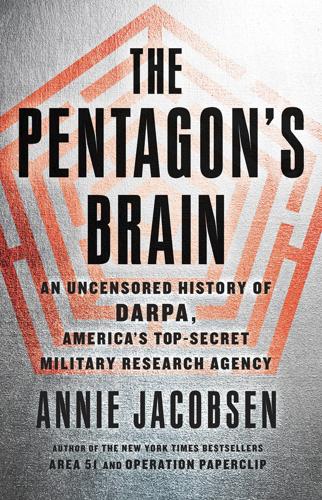
The Pentagon's Brain: An Uncensored History of DARPA, America's Top-Secret Military Research Agency
by
Annie Jacobsen
Published 14 Sep 2015
“The high goals set by the originators of the Jason concept were being met when the Vietnam War intervened,” said Gordon MacDonald, who joined the Jasons in the summer of 1963. “Murray Gell-Mann called to ask if I’d like to join Jason. I respected Murray a great deal,” and said yes to joining. The first year as a Jason, MacDonald recalled, “my contribution was principally related to [nuclear effects]—what happens to the ionosphere when you set off nuclear explosions, things of that sort.” But as individual Jasons became interested in Vietnam, so did the group. The first Jason to be very interested was Murray Gell-Mann. Gell-Mann was one of the most respected thinkers in the Jason group, and one of the most esoteric.
…
Kenneth Watson, a nuclear physicist at the University of California, Berkeley, and protégé of Edward Teller, had done a postdoctoral fellowship at the Institute for Advanced Study in Princeton. Keith Brueckner, a physicist, meteorologist, and former Los Alamos weapons developer, had studied at the Berkeley Radiation Laboratory with Watson and Goldberger and at the Institute for Advanced Study alongside John von Neumann. Murray Gell-Mann, the youngest member, had been a doctoral student of Manhattan Project giant Victor Weisskopf, and was someone Goldberger considered a prodigy. The four physicists agreed to start a for-profit defense consulting company together. Their first idea was to call it Theoretical Physics, Inc. “The idea was that we would not work simply as consultants; we’d work as a formal group, a little business,” Keith Brueckner recalled, in a 1986 oral history.
…
They wanted to limit membership to theoretical physicists, said Goldberger, generalists who had knowledge in a wide variety of areas and used mathematical models and abstractions to understand, explain, and predict phenomena in the natural world. “It was a very elite operation,” recalled Brueckner. “It was an honor to be asked.” Goldberger remembered that “everyone was excited, full of ideas, and very patriotic.” Murph Goldberger, Keith Brueckner, Kenneth Watson, and Murray Gell-Mann drew up a list of their most respected colleagues and asked them to participate. The group’s first meeting took place at IDA headquarters in Virginia on December 17, 1959. George Kistiakowsky, one of President Eisenhower’s science advisors, led the meeting. Kistiakowsky kept a daily desk diary in which he recorded his thoughts.
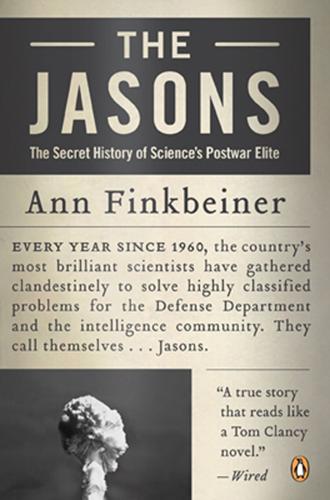
The Jasons: The Secret History of Science's Postwar Elite
by
Ann Finkbeiner
Published 26 Mar 2007
After agreeing with Townes and Stern, the members of the now-defunct Theoretical Physics, Incorporated had met to discuss Jason, “and in one day’s discussion,” Murph said, “we sort of fleshed out the concept and I walked out of the room to go to the john and when I got back it turned out that I was the chairman.” Murph agreed to be chair, in spite of having turned down leadership of Project 137, because Jason was only part time: “I wasn’t about to stop working in physics,” he said. Watson, Brueckner, and Murph—along with a fourth, younger member of Theoretical Physics, Incorporated, Murray Gell-Mann—appointed themselves the first steering committee. Next, Jason had to get the right people. With the cooperation of York and Townes, the new steering committee held a recruiting meeting on December 17, 1959, at IDA in Washington, D.C. They began with a list that Theoretical Physics, Incorporated had already drawn up, Watson said, of people who were “smart and interested in applied science.”
…
The North Vietnamese insurgents encouraged these conflicting dislikes with persuasion, torture, and terror. Countering insurgency relies not only on military science but also on social science—an area not typically undertaken by physicists. Jason briefly got into the social science of the insurgency anyway because Murray Gell-Mann, whose interests were catholic and compelling, was interested in human behavior. “To some of his Jason colleagues,” Gell-Mann’s biographer wrote, “Gell-Mann seemed far less interested in fighting the war than in understanding its sociology. He didn’t see why Jason shouldn’t be able to get together a group of experts in many different fields and figure out a solution.”
…
But because the sensors were laid down in patterns—strings of sensors crossing a trail, the strings a kilometer apart—the signals of a convoy or battalion moving down the trail would also come in patterns. Signals from seismic sensors could also be compared with signals from sound sensors—battalions don’t moo. To work out glitches in the system, DCPG conducted field tests. Jack Ruina went “trudging through Panama jungles,” with several Jasons—among them Murray Gell-Mann—to see how well the sound sensors worked, “given the wildlife and whatnot, the acoustical conditions,” Ruina said. After the test, he said, “Murray decided to stay on, to go hiking through the jungles. I came back not being very impressed with this being a great breakthrough in science, technology, or warfare.”
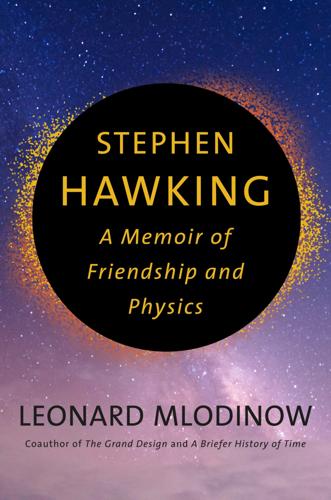
Stephen Hawking
by
Leonard Mlodinow
Published 8 Sep 2020
Kip, who was about Stephen’s age, studied classical general relativity, the original Einstein theory without quantum modifications. At the other end of the Caltech theorist spectrum were two Nobel laureates who specialized in quantum theories and for the most part ignored general relativity. They were the two most influential theoretical physicists of their era, Murray Gell-Mann and Richard Feynman. A decade after Stephen’s Fairchild year, I arrived at Caltech and had the office next to Murray, and down the hall from Feynman. Gell-Mann was “Murray” to me and to most people. He derived his greatest fame from discovering a mathematical scheme to classify and understand the properties of elementary particles.
…
I figured that what I had to say, and how he answered, could be a test of things to come. It could be a way to deepen our connection or, if it went south, it could make our future work awkward for us. Mary was dabbing at Stephen’s mouth, and I had already popped up out of my seat when, seemingly from nowhere, Murray Gell-Mann walked up. Apparently he was visiting from New Mexico. I’d seen him only every now and then since he left Caltech in the 1990s. I thought about how, each time I saw him, his hair had grown just a bit whiter, his posture more slumped. Though still in his late seventies, he seemed a little less sharp, too—not that I would’ve wanted to challenge him to a physics contest.
…
One said, in a 1988 London Sunday Times article, that a list of the twelve best physicists of the twentieth century would not include Stephen. Stephen would have agreed with that assessment. He knew that, back in his early days at Caltech, he would have come in at just number three among the physicists on the fourth floor of the Lauritsen Laboratory—behind Murray Gell-Mann and Richard Feynman. Still, Stephen was happy to have become a spokesperson for his field. What was more important was that probably more than any other physicist alive, he needed the money that comes with fame. Psychologists argue over whether money brings happiness. For Stephen, money brought life.
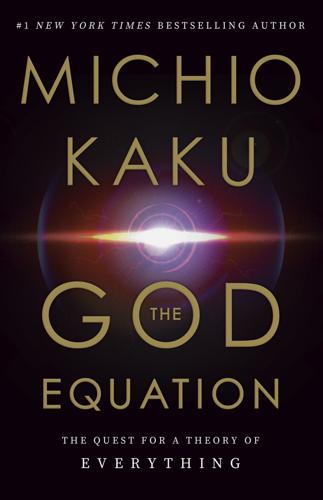
The God Equation: The Quest for a Theory of Everything
by
Michio Kaku
Published 5 Apr 2021
The mess prompted some physicists to claim that perhaps the human mind was not smart enough to understand the subatomic realm. After all, they argued, it is impossible to teach a dog calculus, so perhaps the human mind is not powerful enough to understand what’s happening in the nucleus of an atom. Some of the confusion began to be clarified with the work of Murray Gell-Mann and his colleagues at the California Institute of Technology (Caltech), who claimed that, inside the proton and neutron, there were three even smaller particles called quarks. It was a simple model, but it worked spectacularly well in arranging the particles into groups. Like Mendeleyev before him, Gell-Mann could predict the properties of new strongly interacting particles by looking at the gaps in his theory.
…
Gell-Mann introduced equations containing three quarks; when you interchanged them inside an equation, the equation remained the same. This new symmetry described the reshuffling of three quarks. Polar Opposites II The other great physicist at Caltech, Richard Feynman, who renormalized QED, and Murray Gell-Mann, who introduced the quark, were polar opposites in their personality and temperament. In the popular media, physicists are universally portrayed either as mad scientists (like Doc Brown in Back to the Future) or hopelessly inept nerds, as in The Big Bang Theory. However, in actuality physicists come in all shapes and sizes and personality types.
…
This book would have been impossible without his thoughtful and honest advice. I would also like to thank my colleagues, associates, and friends in the scientific field. In particular, I would like to thank the following Nobel laureates for generously giving me their time and deep insights into physics and the sciences: Murray Gell-Mann, David Gross, Frank Wilczek, Steve Weinberg, Yoichio Nambu, Leon Lederman, Walter Gilbert, Henry Kendall, T. D. Lee, Gerald Edelman, Joseph Rotblat, Henry Pollack, Peter Doherty, and Eric Chivian. Lastly, I would like to thank the more than four hundred physicists and scientists with whom I have had the pleasure of interacting with, both as collaborators in string research, as well as through my weekly science radio programs, the various TV programs that I have hosted for BBC-TV and the Discovery and Science Channels, and my work as the science correspondent for CBS-TV.
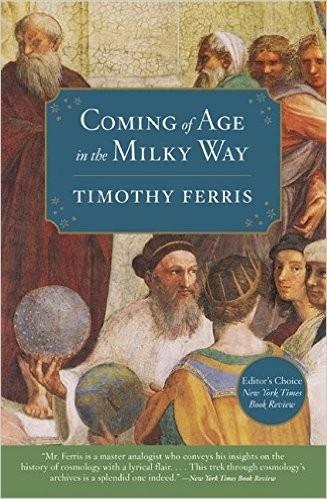
Coming of Age in the Milky Way
by
Timothy Ferris
Published 30 Jun 1988
As one might expect, in the course of so long a project I have incurred more debts of gratitude than I can properly retire. I should like, however, to express my thanks for aid and criticism provided by William Alexander, Sherry Arden, Hans Bethe, Nancy Brackett, Ken Broede, Robert Brucato, Lisa Drew, Ann Druyan, David Falk, Andrew Fraknoi, Murray Gell-Mann, Owen Gingerich, J. Richard Gott III, Stephen Jay Gould, Alan Guth, Stephen Hawking, He Xiang Tao, Karen Hitzig, Larry Hughes, Res Jost, Kathy Lowry, Owen Laster, Irwin Lieb, Dennis Meredith, Arthur Miller, Bruce Murray, Lynda Obst, Heinz Pagels, Abraham Pais, Thomas Powers, Carl Sagan, Allan Sandage, David Schramm, Dennis Sciama, Frank Shu, Erica Spellman, Gustav Tammann, Jack Thibeau, Kip S.
…
For attractive forces (as between a proton and an electron), imagine that the bosons are elastic bands that stretch when the skaters move apart, drawing them together. For the exclusion principle, let each skater wear a hoopskirt that forbids their colliding…. And that is quite enough of that. *The name “quark” was conferred by Murray Gell-Mann, the Caltech physicist who came up with the idea. It comes from a line in James Joyce’s Finnegans Wake, “Three quarks for Muster Mark!” George Zweig, a physicist at Caltech who arrived at the same idea independently, called the entities “aces,” a term that lost out to Gell-Mann’s, perhaps because there are four aces, not three, in a deck of cards. 16 RUMORS OF PERFECTION Spirit of BEAUTY, that dost consecrate With thine own hues all thou dost shine upon Of human thought or form, where art thou gone?
…
Viewed from this perspective, Einstein’s photons, the carriers of the electromagnetic force, are gauge particles, messengers of symmetry. So are the gravitons thought to be the carriers of gravitation. But what were the gauge particles of the strong and weak forces? That question was taken up by one of the first to appreciate the beauty of the Yang-Mills approach, the American physicist Murray Gell-Mann. Some smart scientists (Dirac, Bohr, and the elder Einstein) are modest in demeanor. Others are brash. (Wolfgang Pauli disrupted Yang’s first explication of gauge invariance so persistently that J. Robert Oppenheimer finally had to tell him to shut up and sit down.) Gell-Mann was very smart—he spoke more languages than his friends could keep count of, displayed an expert knowledge of everything from botany to Caucasian carpet-weaving, and was said, with forgivable exaggeration, to rank as a great physicist not because he had any particular aptitude for physics but simply because he deigned to include physics among his many interests—and very brash.
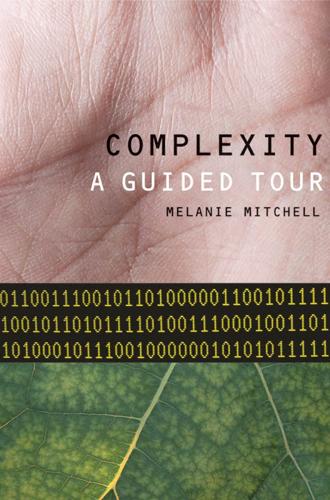
Complexity: A Guided Tour
by
Melanie Mitchell
Published 31 Mar 2009
The immunologist Irun Cohen states that “complex systems sense, store, and deploy more information than do simple systems.” The economist Eric Beinhocker writes that “evolution can perform its tricks not just in the ‘substrate’ of DNA but in any system that has the right information processing and information storage characteristics.” The physicist Murray Gell-Mann said of complex adaptive systems that “Although they differ widely in their physical attributes, they resemble one another in the way they handle information. That common feature is perhaps the best starting point for exploring how they operate.” But just what is meant by “information”? What Is Information?
…
In contrast, here is a string I generated using a pseudo-random number generator: ATCTGTCAAGACGGAACAT (string 2) Assuming my random number generator is a good one, this string has no discernible overall pattern to it, and would require a longer program, namely “Print the exact string A T C T G T C A A A A C G G A A C A T.” The idea is that string 1 is compressible, but string 2 is not, so contains more algorithmic information. Like entropy, algorithmic information content assigns higher information content to random objects than ones we would intuitively consider to be complex. The physicist Murray Gell-Mann proposed a related measure he called “effective complexity” that accords better with our intuitions about complexity. Gell-Mann proposed that any given entity is composed of a combination of regularity and randomness. For example, string 1 above has a very simple regularity: the repeating A C motif.
…
The best set of regularities is the smallest one that describes the entity in question and at the same time minimizes the remaining random component of that entity. For example, biologists today have found many regularities in the human genome, such as genes, regulatory interactions among genes, and so on, but these regularities still leave a lot of seemingly random aspects that don’t obey any regularities—namely, all that so-called junk DNA. If the Murray Gell-Mann of biology were to come along, he or she might find a better set of regularities that is simpler than that which biologists have so far identified and that is obeyed by more of the genome. Effective complexity is a compelling idea, though like most of the proposed measures of complexity, it is hard to actually measure.

The End of Illness
by
David B. Agus
Published 15 Oct 2012
David Agus takes his readers on a fascinating tour of ideas and facts about health and illness. They will find many of those ideas to be unconventional and thought-provoking and many of the facts to be both striking and surprising. Read this book and you will very likely change at least some of your views on health and illness.” —MURRAY GELL-MANN, PHD, Nobel laureate in physics, 1969, and distinguished fellow and cofounder of the Santa Fe Institute “Filled with unorthodox ideas backed with hard science, The End of Illness simplifies for the reader the complexity of vital developments happening in medicine today and teaches us how to make the most of what’s available, as well as what’s soon to come.”
…
My perspective on health began to take a serious turn when I read Clifton’s article, and then it crystallized one night in the company of a Nobel laureate in physics who pushed me to think differently. In July 2009, I attended a dinner party in Aspen, Colorado, where I had the good fortune of meeting Murray Gell-Mann, the scientist who had postulated the existence of quarks nearly fifty years previously. Quarks, particles more elementary than electrons, are the basic building blocks of all matter in the universe. We owe much of our understanding of how the universe organizes itself at the subatomic level to Murray’s work.
…
By contrast, this order of events happens all the time in physics. Before we could prove the existence of black holes, for instance, someone came up with a model—an equation more or less—that indicated that they were out there. And lo and behold, black holes were eventually “discovered.” As I mentioned in the introduction, Murray Gell-Mann first predicted the existence of quarks by creating a model based on mathematics rather than observation. This type of discovery, whereby an abstract theory precedes actual proof, or even a way of testing out a theory, almost never happens in biology. Biology is rife with dogma based on real-life observations rather than postulations.
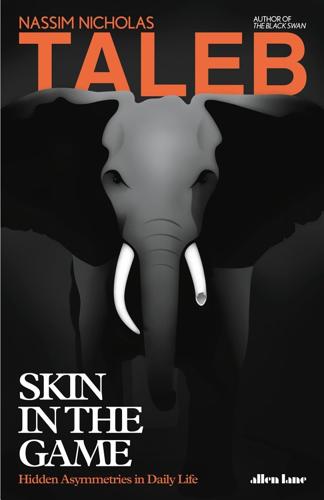
Skin in the Game: Hidden Asymmetries in Daily Life
by
Nassim Nicholas Taleb
Published 20 Feb 2018
My own has been: “never cross a river if it is on average four feet deep.” I effectively organized all my life around the point that sequence matters and the presence of ruin disqualifies cost-benefit analyses; but it never hit me that the flaw in decision theory was so deep. Until out of nowhere came a paper by the physicist Ole Peters, working with the great Murray Gell-Mann. They presented a version of the difference between ensemble and time probabilities with a thought experiment similar to mine above, and showed that just about everything in social science having to do with probability is flawed. Deeply flawed. Very deeply flawed. Largely, terminally flawed.
…
For it looks like you need a lot of intelligence to figure probabilistic things out when you don’t have skin in the game. But for an overeducated nonpractitioner, these things are hard to figure out. Unless one is a genius, that is, has the clarity of mind to see through the mud, or has a sufficiently profound command of probability theory to cut through the nonsense. Now, certifiably, Murray Gell-Mann is a genius (and, likely, Peters). Gell-Mann discovered the subatomic particles he himself called quarks (which got him the Nobel). Peters said that when he presented the idea to Gell-Mann, “he got it instantly.” Claude Shannon, Ed Thorp, J. L. Kelly, and Harald Cramér are, no doubt, geniuses—I can personally vouch for Thorp, who has an unmistakable clarity of mind combined with a depth of thinking that juts out in conversation.
…
In Early Greek Philosophy: Beginning and Early Ionian Thinkers, Part 1. Loeb Classical Library, Harvard University Press. Peters, Ole, 2011. “The Time Resolution of the St Petersburg Paradox.” Philosophical Transactions of the Royal Society of London A: Mathematical, Physical and Engineering Sciences 369(1956): 4913–4931. Peters, Ole, and Murray Gell-Mann, 2016. “Evaluating Gambles Using Dynamics.” Chaos: An Interdisciplinary Journal of Nonlinear Science 26(2): 023103. Available: scitation.aip.org/content/aip/journal/chaos/26/2/10.1063/1.4940236 Piketty, Thomas, 1995. “Social Mobility and Redistributive Politics.” The Quarterly Journal of Economics 110(3): 551–584. ———, 2015.
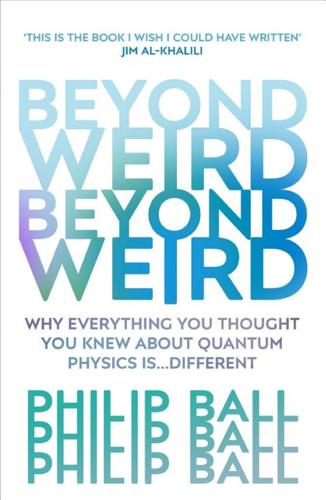
Beyond Weird
by
Philip Ball
Published 22 Mar 2018
But about where the problems lie, he was right. And probably, yes, he did not know why. Still, some researchers regard the rather equivocal predominance of the Copenhagen Interpretation as mere historical contingency at best, and as the result of effective (even aggressive) marketing at worst. The Nobel laureate physicist Murray Gell-Mann accused Bohr of having ‘brainwashed’ a generation of physicists into thinking that the problems of quantum mechanics had been solved: the Copenhagen Interpretation has, he said, a ‘tranquillizing’ effect that induces an uncritical stupor. Even if you don’t object to the Copenhagen Interpretation, you have to wonder whether its hegemony really is due to anything other than chance – or to the canny machinations of its advocates, marshalled by the indefatigable Bohr.
…
Yet not all of these are realized – specifically, at large scales only certain classical states are allowed. Why is that? In the so-called Consistent Histories Interpretation of quantum mechanics, developed in the 1980s by the physicist Robert Griffiths and subsequently and independently by Roland Omnès and by Murray Gell-Mann and James Hartle, we can narrow down the options using sheer logic. That’s to say, even though quantum mechanics forgoes any choice of outcomes – this or that – in favour of just their probabilities, we can still reasonably say that anything that happens has to be consistent with what came before.
…
It’s a reminder that in science – and this is arguably truer than ever in a contested field like quantum mechanics – it’s as worthwhile for an idea to be productive as it is for it to be ‘right’. Deutsch’s Many Worlds convictions can, at least in this regard, therefore be considered productive. But what are the chances that they are right? If Murray Gell-Mann was right that Niels Bohr brainwashed a generation of physicists to accept the Copenhagen Interpretation, either his influence has waned or he didn’t do a very good job in the first place. For in an informal poll conducted at an international meeting in 2011 on ‘quantum physics and the nature of reality’, fewer than half of the attendees professed an allegiance to Bohr’s position.
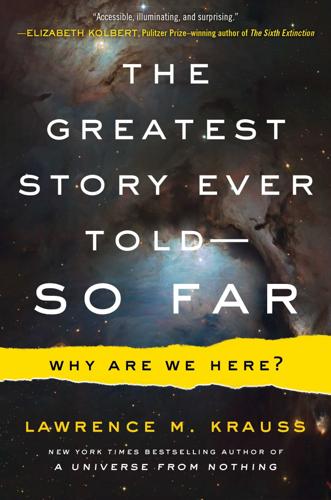
The Greatest Story Ever Told--So Far
by
Lawrence M. Krauss
Published 21 Mar 2017
In addition, since Sudarshan’s idea required at least some of the experimental data to be wrong, Marshak may have decided it was premature to present it at the meeting. That summer Marshak was working at the RAND Corporation in Los Angeles and invited Sudarshan and another student to join him. The two most renowned particle theorists in the world then, Feynman and Murray Gell-Mann, were at Caltech, and each had become obsessed with unraveling the form of the weak interaction. Feynman had missed out on the discovery of parity violation by not following his own line of questioning, but had since realized that his work on quantum electrodynamics could shed light on the weak interaction.
…
The only solution to this problem would be if another neutral gauge particle existed—in addition to the photon—which itself coupled to only left-handed particles. But clearly the new neutral particle would also have to be heavy since the interactions it mediated would have to be weak as well. Glashow’s ideas were reported to the physics community by Murray Gell-Mann at the 1960 Rochester meeting, as Gell-Mann had by then recruited Glashow to Caltech to work in Gell-Mann’s group. Glashow’s paper on the subject, submitted in 1960, appeared in 1961 in print. Yet, no sudden stampede occurred in response. After all, two fundamental problems remained with Glashow’s proposal.
…
Particles with the general properties of the vector mesons predicted by Sakurai were discovered experimentally over the next two years, and the idea that they might somehow yield the secret of the strong interaction was exploited to try to make sense of the otherwise complex interactions between nucleons and other particles. In response to this notion that some kind of Yang-Mills symmetry might be behind the strong interaction, Murray Gell-Mann developed an elegant symmetry scheme he labeled in a Zen-like fashion the Eightfold Way. It not only allowed a classification of eight different vector mesons, but also predicted the existence of thus-far-unobserved strongly interacting particles. The idea that these newly proposed symmetries of nature might help bring order to what otherwise seemed a hopeless menagerie of elementary particles was so exciting that, when his predicted particle was subsequently discovered, it led to a Nobel Prize for Gell-Mann.
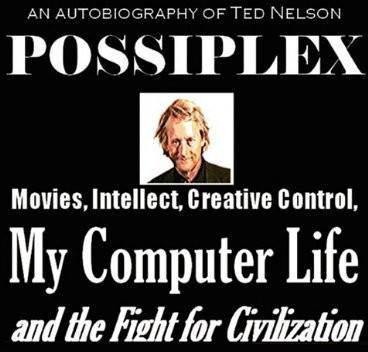
Possiplex
by
Ted Nelson
Published 2 Jan 2010
She actually managed to get to the man in charge behind the scenes. It was none other than Murray Gell-Mann, the physicist who discovered the quark; he was running the MacArthur selection as a pro bono operation, or so she told me. She had in her hand a paper on Korzybski that I had written. (On someone's request, I had written a long paper on how Korzybski related to my schematics work-- not because I was a Korzybski fan, but because someone had asked for it with the hint that it would bring money. It didn’t. But it was a good paper.) Now my friend profferred my Korzybski paper to Murray Gell-Mann, the Nobel physicist. Gell-Mann looked down at the paper.
…
If I had had my wits about me I would have sold out for a little while, gone to Microsoft for a year or so, bitten my tongue and been polite, made a lot of money and left, like my friend Bob Wallace, creator of PC-Write (And perhaps I could have found a way to rationalize it to my readers, if not my conscience.) No one in the world would have reproached me. But politeness and toadying and accommodation with awfulness are not my thing. I am a truth-teller and that’s that. What would Murray Gell-Mann have said? ca. 1986 Friends often tell me, “Oh, you should get a MacArthur Genius Grant!” Yeah, sure. Unfortunately the MacArthur is something you cannot apply for; you have to be noticed and recognized. (Also, you have to be doing something everybody understands.) The MacArthurs go to people who look good on paper, with polished and well-understood achievements already behind them.
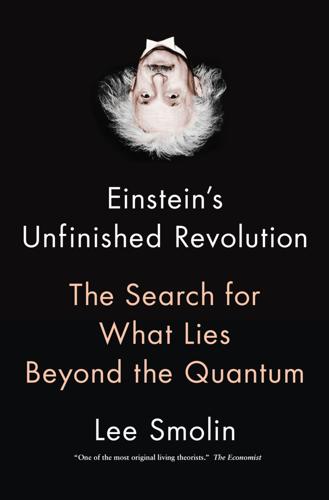
Einstein's Unfinished Revolution: The Search for What Lies Beyond the Quantum
by
Lee Smolin
Published 31 Mar 2019
But Rafael Sorkin proposes that this is the basis of a realist quantum theory, in which the beables are histories. The catch (you should know by now there always is a catch) is that one has to use a nonstandard quantum logic to talk about what is real about those histories.6 A very different use is made of histories by Murray Gell-Mann and James Hartle,7 who maintain that the reality we experience is just one of many equally consistent and equally real histories. The idea is that if different histories decohere, they can’t be superposed; thus they can be thought of as alternative histories. Gell-Mann and Hartle, along with Robert Griffiths and Roland Omnès, formulated this idea as the consistent histories approach to quantum mechanics.8 A key result of this approach was that a history obeying Newton’s laws of classical physics would be part of a family that would decohere.
…
Sorkin, “Quantum Measure Theory and Its Interpretation,” in Quantum Classical Correspondence: Proceedings of the 4th Drexel Symposium on Quantum Nonintegrability, Drexel University, Philadelphia, USA, September 8–11, 1994, eds. Bei-Lok Hu and Da Hsuan Feng (Cambridge, MA: International Press, 1997), 229–51, arXiv:gr-qc/9507057. 7. Murray Gell-Mann and James B. Hartle, “Quantum Mechanics in the Light of Quantum Cosmology,” in Proceedings of the 3rd International Symposium: Foundations of Quantum Mechanics in the Light of New Technology, Tokyo, 1989, 321–43; Gell-Mann and Hartle, “Alternative Decohering Histories in Quantum Mechanics,” in Proceedings of the 25th International Conference on High Energy Physics, 2–8 August 1990, Singapore, eds.
…
* To put it more precisely, while the measure of all those branches with statistics not obeying the Born rule goes to zero, in the limit of an infinite number of trials, the number of those branches does not. * Wallace and Myrvold have since left Oxford; Deutsch, Greaves, and Saunders remain as of 2018. * The idea that decoherence defines the branches in the Many Worlds Interpretation had been suggested earlier by others including Heinz-Dieter Zeh, Wojciech Zurek, Murray Gell-Mann, and James Hartle. * Indeed, the holographic principle (which is defined on pages 259–260) requires that any system that can be fit into a box with walls of a finite area has a finite number of states. This is certainly the case with any system of the kind we are discussing here—an atomic system interacting with a measuring instrument.

Turing's Cathedral
by
George Dyson
Published 6 Mar 2012
Ware, “History and Development of the Electronic Computer Project,” p. 16. 16. David J. Wheeler, interview with William Aspray; Murray Gell-Mann, interview with author, August 10, 2004, GBD. 17. John von Neumann, “Lectures on Probabilistic Logics and the Synthesis of Reliable Organisms from Unreliable Components,” from notes by R. S. Pierce on lectures given at the California Institute of Technology, January 4–15, 1952, p. 1 (later published in C. E. Shannon and J. McCarthy, Automata Studies [Princeton, N.J.: Princeton University Press, 1956], pp. 43–99). Murray Gell-Mann, interview with author. 18. John von Neumann, “A Model of General Economic Equilibrium,” Review of Economic Studies 13 (1945): 1. 19.
…
“There are a number of offspring of the Princeton machine, not all of them closely resembling the parent,” Willis Ware reported in March 1953. “From about 1949 on, engineering personnel visited us rather steadily and took away designs and drawings for duplicate machines.”15 In turn, von Neumann made visits to the other laboratories, and freely exchanged ideas. Physicist Murray Gell-Mann was working during the summer of 1951 at the Control Systems Laboratory, housed immediately above the ILLIAC at the University of Illinois. “This was used on secret government work,” says David Wheeler, “and some wires came down.” Gell-Mann and Keith Brueckner had been assigned, by their air force sponsors, “to imagine that we had very, very bad computer parts.
…
God knows what they had to pay him.”16 In late 1951, von Neumann wrote up these ideas in a short manuscript, “Reliable Organizations of Unreliable Elements,” and in January 1952 he gave a series of five lectures at the California Institute of Technology, later published as Probabilistic Logics and the Synthesis of Reliable Organisms from Unreliable Components, in which he began to formulate a theory of reliability, in his characteristic, axiomatic way. “Error is viewed, therefore, not as an extraneous and misdirected or misdirecting accident, but as an essential part of the process,” he announced. He thanked Keith A. Brueckner and Murray Gell-Mann for “some important stimuli on this subject,” but not in any detail. “I wasn’t upset at all, at the time,” says Gell-Mann. “I thought, my God, this great man is referring to me in the footnote. I’m in the footnote! I was so flattered, and I suppose Keith was, too.”17 Second- and third-generation copies of the IAS machine followed before the decade was out.
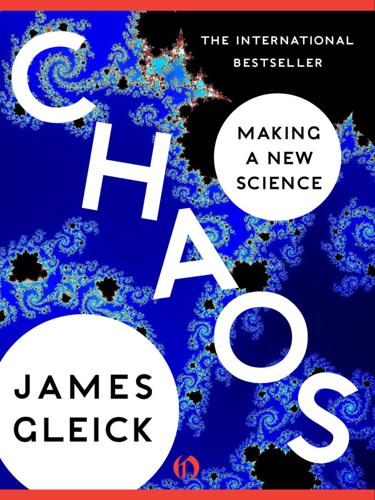
Chaos: Making a New Science
by
James Gleick
Published 18 Oct 2011
Smale had steered mathematics in the direction of such physical problems, but, as Yorke well understood, the language of mathematics remained a serious barrier to communication. If only the academic world had room for hybrid mathematician/physicists—but it did not. Even though Smale’s work on dynamical systems had begun to close the gap, mathematicians continued to speak one language, physicists another. As the physicist Murray Gell-Mann once remarked: “Faculty members are familiar with a certain kind of person who looks to the mathematicians like a good physicist and looks to the physicists like a good mathematician. Very properly, they do not want that kind of person around.” The standards of the two professions were different.
…
And wheel dismissively back toward the blackboard, adding, “In reality, of course, you have a limited amount of noisy data.” Swinney was experimenting with stuff. For him the turning point had come when he was a graduate student at Johns Hopkins. The excitement of particle physics was palpable. The inspiring Murray Gell-Mann came to talk once, and Swinney was captivated. But when he looked into what graduate students did, he discovered that they were all writing computer programs or soldering spark chambers. It was then that he began talking to an older physicist starting to work on phase transitions—changes from solid to liquid, from nonmagnet to magnet, from conductor to superconductor.
…
THE EVEN-ODD SYSTEM From computer simulations, Yorke found that the system forced drivers to make more trips to the filling station and to keep their tanks fuller all the time; thus the system increased the amount of gasoline sitting wastefully in the nation’s automobiles at any moment. HE ANALYZED THE MONUMENT’S SHADOW Airport records later proved Yorke correct. LORENZ’S PAPER Yorke. “FACULTY MEMBERS” Murray Gell-Mann, “The Concept of the Institute,” in Emerging Syntheses in Science, proceedings of the founding workshops of the Santa Fe Institute (Santa Fe: The Santa Fe Institute, 1985), p. 11. HE GAVE A COPY Yorke, Smale. “IF YOU COULD WRITE” Yorke. HOW NONLINEAR NATURE IS A readable essay on linearity, non-linearity, and the historical use of computers in understanding the difference is David Campbell, James P.
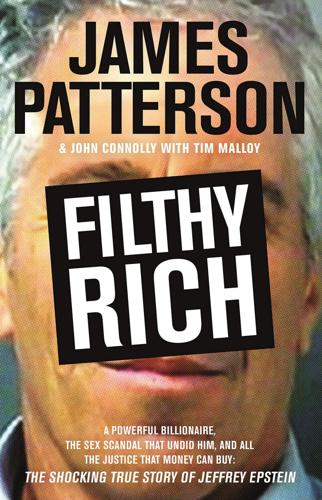
Filthy Rich: A Powerful Billionaire, the Sex Scandal That Undid Him, and All the Justice That Money Can Buy: The Shocking True Story of Jeffrey Epstein
by
James Patterson
,
John Connolly
and
Tim Malloy
Published 10 Oct 2016
Other friends of Epstein’s say that he truly did have a brilliant mind for science. And in any case, Epstein had done more than sponsor individual scientists. He’d also sponsored conferences on Little Saint Jeff’s. On his website, he announced a conference called Mindshift at which Nobel laureates, such as the theoretical physicist Murray Gell-Mann, would mix with surgeons, engineers, and futurists and where professors would discuss cognitive neuroscience, artificial intelligence, systems of encryption and decryption, and other topics. Epstein had been hosting get-togethers like this for years. Toward the end of Chief Reiter’s investigation, in March of 2006, Epstein had hosted twenty top physicists—including three Nobel Prize winners as well as the celebrity physicist Stephen Hawking—at a Saint Thomas symposium called “Confronting Gravity,” which was advertised as “a workshop to explore fundamental questions in physics and cosmology.”
…
Isabel is Ghislaine Maxwell’s sister and the daughter of Robert Maxwell. It was an odd thing, Epstein’s association with this self-professed PhD who, on closer inspection, turned out to be a bit of a grifter. But the Mindshift conference that Epstein and Seckel hosted in the Virgin Islands did take place, in 2010. Murray Gell-Mann was there, along with Leonard Mlodinow, a physicist who coauthored books with Stephen Hawking. Gerald Sussman, an expert on artificial intelligence who taught at MIT and also attended the conference, said that he didn’t remember too much about it. “We had scientific discussions, talked about various things,” he said vaguely.
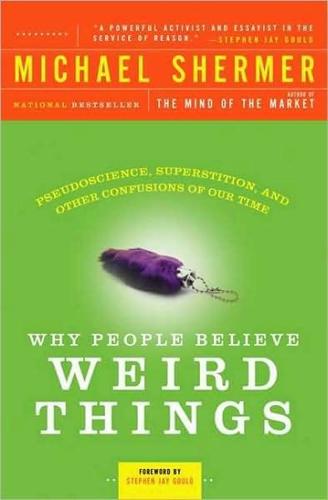
Why People Believe Weird Things: Pseudoscience, Superstition, and Other Confusions of Our Time
by
Michael Shermer
Published 1 Jan 1997
Attorneys Jeffrey Lehman and Beth Shapiro Kaufman from the firm of Caplin and Drysdale, Nobel laureate Christian Anfinsen, biologist Francisco Ayala from the University of California, Davis, and paleontologist Stephen Jay Gould from Harvard University faced a room filled with television, radio, and newspaper reporters from across the country. Gould and Ayala made opening statements, and a statement by Nobel laureate Murray Gell-Mann was read in absentia. The emotional commitment of these representatives from the scientific community was clear from the outset and baldly disclosed in their statements. Gould noted, "As a term, creation-science is an oxymoron—a self-contradictory and meaningless phrase—a whitewash for a specific, particular, and minority religious view in America—Biblical literalism."
…
In spite of centuries of attention by scientists and philosophers of science, no concise definition of science has ever been accepted by the community of scientists and scholars. This situation changed temporarily with the amicus curiae brief submitted on August 18, 1986, to the Supreme Court. For this brief, the amid managed to define and agree upon the nature and scope of science. The brief was instigated by Murray Gell-Mann, Paul MacCready, and other members of the Southern California Skeptics Society after they read in the Los Angeles Times that the U.S. Supreme Court had agreed to hear the Louisiana case. Worried, they contacted attorney Jeffrey Lehman, who had recently clerked for Justice John Paul Stevens.
…
The New Age: Notes of a Fringe Watcher. Buffalo, N.Y.: Prometheus. ......... 1991b. Tipler's Omega Point Theory. Skeptical Inquirer 15, no. 2:128-134. ......... 1992. On the Wild Side. Buffalo, N.Y.: Prometheus. ......... 1996. Transcript of Interview by M. Shermer, August 11. Gell-Mann, M. 1986. Press Statement by Dr. Murray Gell-Mann. Los Angeles Skeptics Evaluative Report 2, no. 4:5. ......... 1990. Transcript of Interview by M. Shermer. ......... 1994a. What Is Complexity? Complexity 1, no. 1:16-19. ......... 1994b. The Quark and the Jaguar. New York: Freeman. George, J., and L. Wilcox. 1992. Nazis, Communists, Klansmen, and Others on the Fringe: Political Extremism in America.
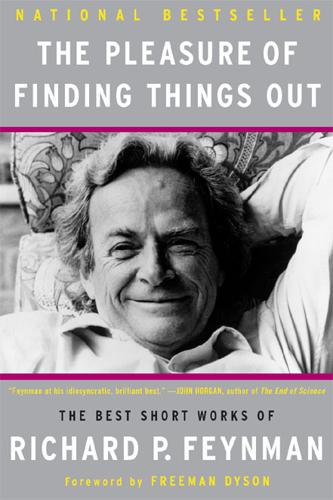
The Pleasure of Finding Things Out: The Best Short Works of Richard P. Feynman
by
Richard P. Feynman
and
Jeffrey Robbins
Published 1 Jan 1999
(On the bongos, it is said, he can play ten beats with one hand against eleven with the other; try it, and you may decide that quantum electrodynamics is easier.) Among Feynman’s other achievements are his contribution to understanding the phase changes of super-cooled helium, and his work with Caltech colleague Murray Gell-Mann* on the theory of beta decay of atomic nuclei. Both subjects are still far from final resolution, he points out; indeed, he does not hesitate to call quantum electrodynamics itself a “swindle” that leaves important logical questions unanswered. What kind of man can do work of that caliber while nursing the most penetrating doubts?
…
And so it turns out that a theory has been invented–the theory of quarks; that certain of these things like the proton, for instance, or neutron, are made of three objects called quarks. NARRATOR: No one has yet seen a quark, which is too bad, because they may represent the fundamental building block for all the other more complicated atoms and molecules that make up the universe. The name was chosen for no particular reason by Dr. Feynman’s colleague, Murray Gell-Mann, some years ago. Somewhat to Dr. Gell-Mann’s surprise, the Irish novel writer James Joyce had already anticipated that name thirty years earlier in his book, Finnegan’s Wake. The key phrase was “three quarks for Muster Mark.” This was even a bigger coincidence since, as Dr. Feynman explained, the quarks that make up the particles of the universe seem to come in threes.
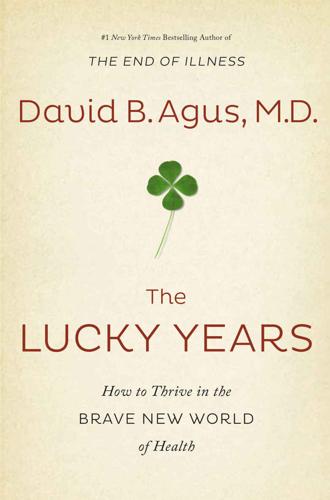
The Lucky Years: How to Thrive in the Brave New World of Health
by
David B. Agus
Published 29 Dec 2015
Agus will show you what it truly means to enjoy the lucky years.” —Dov Seidman, author of How: Why How We Do Anything Means Everything “Dr. Agus presents a provocative, highly informative way of understanding revolutions in health and health care today that will change the quality of our lives.” —Murray Gell-Mann, PhD, Nobel Laureate in Physics, 1969, and distinguished fellow and cofounder of the Santa Fe Institute “Dr. Agus once again gives us a clear path to better health. We are lucky to have such an incredible guide to such a critical subject.” —Marc Benioff, chairman and CEO, salesforce.com Thank you for downloading this Simon & Schuster eBook
…
To the research team including lab chief Shannon Mumenthaler, Jonathan Katz, Dan Ruderman, Paul Macklin, Kian Kani, and Yvonne Suarez, and the rest of the dedicated scientists. Thank you for pushing my thinking forward and your work in figuring out better ways to understand and treat disease. To my science mentors, collaborators, and friends Andrea Armani, Anthony Atala, Anna Barker, Paul Davies, Scott Fraser, Sam Gambhir, Murray Gell-Mann, Inderbir Gill, Dana Goldman, Danny Hillis, Cliff Hudis, Carl Kesselman, Parag Mallick, Franziska Michor, Vincent Miller, Larry Norton, Carmen Puliafito, Michael Quick, Chris Rose, Howard Scher, P. K. Shah, Jeff Trent, and Yannis Yortsos. I have the privilege of seeing the breaking health and technology information daily through my involvement with CBS News.
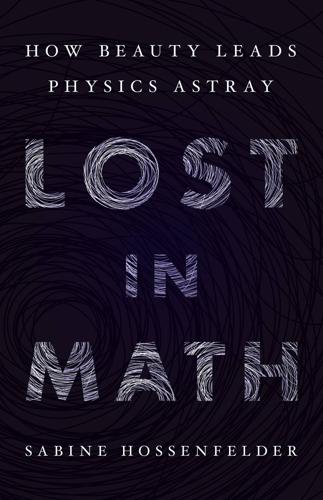
Lost in Math: How Beauty Leads Physics Astray
by
Sabine Hossenfelder
Published 11 Jun 2018
By the 1960s, accommodating this “particle zoo” in a comprehensive theory had become a major research agenda. One of the most popular approaches at the time was to just forgo the desire for explanation, and to collect the particles’ properties in a big table—the scattering matrix or S-matrix—which was the very opposite of beauty and economy. Then came Murray Gell-Mann. He identified the correct properties of the particles—called hypercharge and isospin—and it turned out all the particles could be classified by symmetric patterns known as multiplets. FIGURE 1. The baryon decouplet is an example of the use of symmetries in theoretical physics. Gell-Mann used its incompleteness to predict the omega minus (Ω−), the particle at the bottom tip.
…
Fearful symmetry: the search for beauty in modern physics. New York: Macmillan. 18. Lederman L. 2006. The God particle. Boston: Mariner Books, p. 15. 19. The quark model was discovered independently at almost the same time by George Zweig. 20. Gell-Mann M, in a TED talk filmed March 2007. www.ted.com/talks /murray_gell_mann_on_beauty_and_truth_in_physics. The version I quoted is what is written on his slide. What he says is: “We have this remarkable experience in this field of fundamental physics that beauty is a very successful criterion to choose the right theory.” 21. Lederman L. 2007. “The God particle et al.”
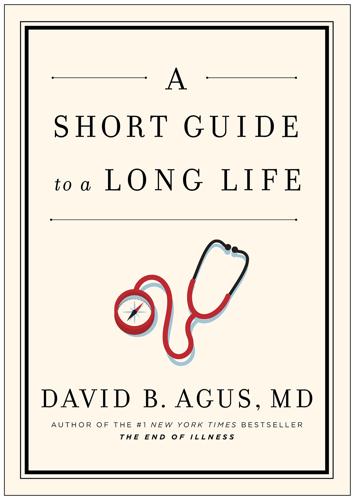
A Short Guide to a Long Life
by
David B. Agus
Published 7 Jan 2014
I also have to thank those who continue to support and inspire me on a regular basis, including Jeff Fager, Sandy Gleysteen, Gayle King, Jonathan LaPook, Chris Licht, Norah O’Donnell, Karolyn Pearson, David Rhodes, and Charlie Rose at CBS News, who empower me to be able to educate and inform. To Dominick Anfuso, Marc Benioff, Gerald Breslauer, Eli Broad, Bill Campbell, Michael Dell, Larry Ellison, Robert Evans, Murray Gell-Mann, Al Gore, Brad Grey, Davis Guggenheim, Danny Hillis, Walter Isaacson, Peter Jacobs, Clifton Leaf, Max Nikias, Fabian Oberfeld, Howard Owens, Shimon Peres, Maury Povich, Carmen Puliafito, Bruce Ramer, Sumner Redstone, Joe Schoendorf, Dov Seidman, Bonnie Solow, Steven Spielberg, Elle Stephens, Yossi Vardi, Jay Walker, David Weissman, and Neil Young: your mentorship, friendship, and advice are truly appreciated.
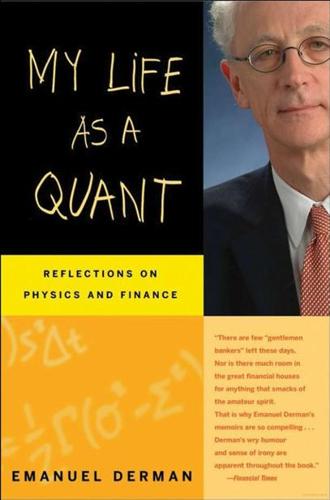
My Life as a Quant: Reflections on Physics and Finance
by
Emanuel Derman
Published 1 Jan 2004
So many new ones were being discovered in cosmic rays or man-made colliders that some serious physicists (from California, of course) began to propound holistic sorts of models in which no particle was more elementary than any other and any particle could be considered a composite of all the rest. In Cape Town in the summer of 1964, we heard popular lectures about the work of physicists Murray Gell-Mann and Yuval Ne'eman, both modern-day Mendeleyevs, who each invented their own periodic table of particles. Some of the subtables in their system contained eight distinct particles. Gell-Mann dubbed his model the Eightfold Way, a sophisticated and hip allusion to the eight Buddhist principles of living.
…
Pais, a tiny man and the most renowned professor, had hired me into his lab; his former collaborator Mirza Abdul Baqi Beg, a burly Pakistani with a Pancho Villa mustache who always cited the famous German Jewish physicist Rudolf Peierls as his mentor, ran another lab. In a much more low-stakes version of the Lee-Yang quarrel, Pais was rumored to be at war with Beg, and we heard reports of prolonged shouting matches. We also heard that Pais had made a bitter enemy of Murray Gell-Mann, his 1950s collaborator, who, according to George Johnson's biography of Gell-Mann, always referred to Pais as "the evil dwarf." After what I had seen of Lee andYang, I was not overly surprised by these feuds. How hard and how long you appeared to work at Rockefeller was irrelevant; what counted was what you accomplished (and, perhaps, the aura you radiated of how much you might accomplish).
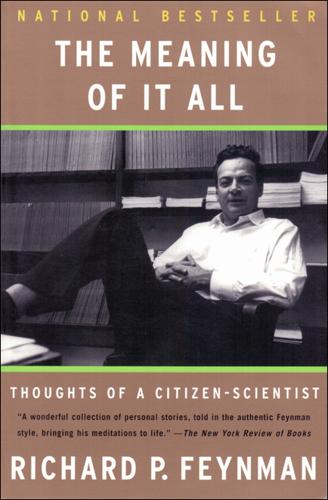
The Meaning of It All
by
Richard P. Feynman
Published 8 Jul 2012
In 1965 he received the Nobel Prize in Physics, along with Sin–Itero Tomanaga and Julian Schwinger, for his work in quantum electrodynamics. Dr. Feynman won his Nobel Prize for successfully resolving problems with the theory of quantum electrodynamics. He also created a mathematical theory that accounts for the phenomenon of superfluidity in liquid helium. Thereafter, with Murray Gell–Mann, he did fundamental work in the area of weak interactions such as beta decay. In later years Feynman played a key role in the development of quark theory by putting forward his parton model of high energy proton collision processes. Beyond these achievements, Dr. Feynman introduced basic new computational techniques and notations into physics—above all, the ubiquitous Feynman diagrams, which, perhaps more than any other formalism in recent scientific history, have changed the way in which basic physical processes are conceptualized and calculated.

This Will Make You Smarter: 150 New Scientific Concepts to Improve Your Thinking
by
John Brockman
Published 14 Feb 2012
I’m tempted to say it’s the greatest unsolved problem. Liberated from its origin in neural networks, the concept of hidden layers becomes a versatile metaphor with genuine explanatory power. For example, in my work in physics I’ve noticed many times the impact of inventing names for things. When Murray Gell-Mann invented “quarks,” he was giving a name to a paradoxical pattern of facts. Once that pattern was recognized, physicists faced the challenge of refining it into something mathematically precise and consistent, but identifying the problem was the crucial step toward solving it! Similarly, when I invented “anyons,” for theoretical particles existing in only two dimensions, I knew I had put my finger on a coherent set of ideas, but I hardly anticipated how wonderfully those ideas would evolve and be embodied in reality.
…
The more such realities are recognized, the more likely it is that innovative approaches to negotiation can build from the middle, instead of arguing endlessly from the edge. The same body of research on climate attitudes, for example, shows far less disagreement on the need for advancing the world’s limited menu of affordable energy choices. The physicist Murray Gell-Mann has spoken often of the need, when faced with multidimensional problems, to take a “crude look at the whole”—a process he has even given an acronym, CLAW. It’s imperative, where possible, for that look to include an honest analysis of the species doing the looking as well. There will never be a way to invent a replacement for, say, the United Nations or the House of Representatives.
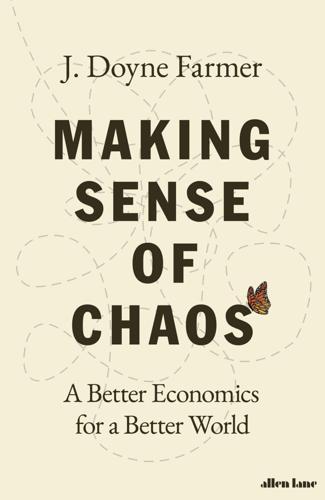
Making Sense of Chaos: A Better Economics for a Better World
by
J. Doyne Farmer
Published 24 Apr 2024
Later, at Los Alamos, I organized conferences and workshops on ‘Cellular Automata’, ‘Evolution, Games and Learning’ and similar topics, and invited leading scholars who were thinking about these things to visit, creating a hub of activity.4 The senior fellows at Los Alamos decided that this kind of work needed its own institution, free from the taint of a weapons laboratory. So, in 1984, the Los Alamos physical chemist George Cowan co-founded (with theoretical physicist Murray Gell-Mann) the Santa Fe Institute, and shortly afterward the phrase complex systems entered our vocabulary. I became affiliated with the Institute, and, in 1988, I started the Complex Systems Group at Los Alamos and recruited several outstanding postdoctoral researchers who later became leaders in the field.
…
JSTOR, https://doi.org/10.2307/1884852. 2 I unfortunately never met Herbert Simon, who died in 2001. Given that he was clearly one of the pioneers of complex systems, and complexity economics in particular, it always struck me as peculiar that he never spent time at the Santa Fe Institute. I once asked SFI founder Murray Gell-Mann why this never happened. He answered that he had once served on a committee with Simon and felt intimidated by him. Given that Murray was the smartest and most intimidating person I knew (by a healthy margin), Simon must have been a real force of nature. For more on Herb Simon, see Axtell (2024). 3 Simon (1957), p.198. 4 Gigerenzer and Brighton (2009). 5 Gigerenzer and Brighton (2009).

Topics in Market Microstructure
by
Ilija I. Zovko
Published 1 Nov 2008
John Miller for his experienced academic advice, at times a “tough hand” and most importantly for showing me one example where game theory can be practical.1 Rhonda Butler-Villa for helping in numerous issues with authorities (just the usual things...) I also thank Constantino Tsallis for being a great role model; Ilya Peiros, Murray Gell-Mann, Goeffrey West, George Gummerman, Steve Lansing, Christopher Lantz and the late Sergei Starostin for the inspirational lectures and a general inspiring environment. I am grateful to Cormac McCarthy for pulling my car out of a ditch. Thanks go to people who I have had the privilege to meet and who took the time to answer my questions: Brian Arthur, J.P.Bouchaud, Sam Bowles, Michel Dacorogna, Raphael Douady, Thomas Lux, Soren Johansen, Rosario Mantegna and Ramon Marimon.
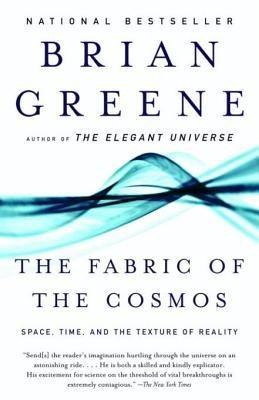
The Fabric of the Cosmos
by
Brian Greene
Published 1 Jan 2003
Does decoherence resolve the quantum measurement problem? Is decoherence responsible for wavefunctions’ closing the door on all but one of the potential outcomes to which they can lead? Some think so. Researchers like Robert Griffiths, of Carnegie Mellon; Roland Omnès, of Orsay; the Nobel laureate Murray Gell-Mann, of the Santa Fe Institute; and Jim Hartle, of the University of California at Santa Barbara, have made great progress and claim that they have developed decoherence into a complete framework (called decoherent histories) that solves the measurement problem. Others, like myself, are intrigued but not yet fully convinced.
…
It is true that if, in light of the results of EPR, Bell, and Aspect, we try to maintain realism—for example, as in Bohm’s theory discussed later in the chapter—the kind of nonlocality we require to be consistent with the data seems to be more severe, involving nonlocal interactions, not just nonlocal correlations. Many physicists have resisted this option and have thus relinquished realism. 15. See, for example, Murray Gell-Mann, The Quark and the Jaguar (New York: Freeman, 1994), and Huw Price, Time’s Arrow and Archimedes’ Point (Oxford: Oxford University Press, 1996). 16. Special relativity forbids anything that has ever traveled slower than light speed from crossing the speed-of-light barrier. But if something has always been traveling faster than the speed of light, it is not strictly ruled out by special relativity.
…
The bottom line is that we don’t, and some physicists have even suggested experiments to detect the possible influence that such a future constraint might have on things that we can observe today. For an interesting article discussing the possibility of future and past constraints on entropy, see Murray Gell-Mann and James Hartle, “Time Symmetry and Asymmetry in Quantum Mechanics and Quantum Cosmology,” in Physical Origins of Time Asymmetry, J. J. Halliwell, J. Pérez-Mercader, W. H. Zurek, eds. (Cambridge, Eng.: Cambridge University Press, 1996), as well as other papers in Parts 4 and 5 of that collection. 18.
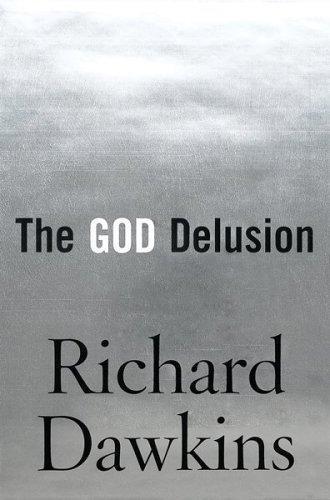
The God Delusion
by
Richard Dawkins
Published 12 Sep 2006
So, Smolin suggests, there has been a Darwinian natural selection of universes in the multiverse, directly favouring the evolution of black hole fecundity and indirectly favouring the production of life. Not all physicists are enthusiastic about Smolin’s idea, although the Nobel Prize-winning physicist Murray Gell-Mann is quoted as saying: ‘Smolin? Is he that young guy with those crazy ideas? He may not be wrong.’70 A mischievous biologist might wonder whether some other physicists are in need of Darwinian consciousness-raising. It is tempting to think (and many have succumbed) that to postulate a plethora of universes is a profligate luxury which should not be allowed.
…
Carter, ‘The anthropic principle and its implications for biological evolution’, Philosophical Transactions of the Royal Society of London A, 310, 1983, 347–63. For a book-length discussion of the anthropic principle, see Barrow and Tipler (1988). 68 Comins (1993). 69 I spelled this argument out more fully in The Blind Watchmaker (Dawkins 1986). The anthropic principle: cosmological version 70 Murray Gell-Mann, quoted by John Brockman on the ‘Edge’ website, http://www.edge.org/3rd_culture/bios/smolin.html. 71 Ward (1996: 99); Polkinghorne (1994: 55). An interlude at Cambridge 72 J. Horgan, ‘The Templeton Foundation: a skeptic’s take’, Chronicle of Higher Education, 7 April 2006. See also http://www.edge.org/3rd_culture/horgan06/horgan06_index.html. 73 P.
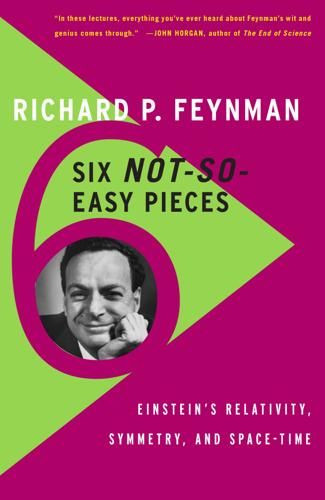
Six Not-So-Easy Pieces: Einstein’s Relativity, Symmetry, and Space-Time
by
Richard P. Feynman
,
Robert B. Leighton
and
Matthew Sands
Published 22 Mar 2011
In 1965 he received the Nobel Prize in Physics, along with Sin-Itero Tomanaga and Julian Schwinger, for his work in quantum electrodynamics. Dr. Feynman won his Nobel Prize for successfully resolving problems with the theory of quantum electrodynamics. He also created a mathematical theory that accounts for the phenomenon of superfluidity in liquid helium. Thereafter, with Murray Gell-Mann, he did fundamental work in the area of weak interactions such as beta decay. In later years Feynman played a key role in the development of quark theory by putting forward his parton model of high-energy proton collision processes. Beyond these achievements, Dr. Feynman introduced basic new computational techniques and notations into physics, above all, the ubiquitous Feynman diagrams that, perhaps more than any other formalism in recent scientific history, have changed the way in which basic physical processes are conceptualized and calculated.
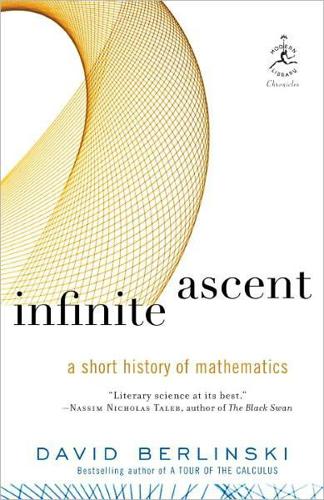
Infinite Ascent: A Short History of Mathematics
by
David Berlinski
Published 2 Jan 2005
Symmetry remains symmetry, something captured by a group. In the early 1960s, particle physicists were confronted with a virtual zoo of new particles, unstable objects that left glowing traces of themselves in various experiments but refused to cohere into any stable pattern. A scheme of organization was needed. Murray Gell-Mann and Yuval Ne’eman both realized that SU(2) was a subgroup of a still larger group—the fabled SU(3)—and that when particles were organized by SU(3), an eightfold symmetry emerged, with families of particles neatly organized into very intuitive subgroups. When one of the physical octets specified by the group appeared to be missing a member, Gell-Mann and Ne’eman both predicted that the missing particle was there and would be found—as it was.
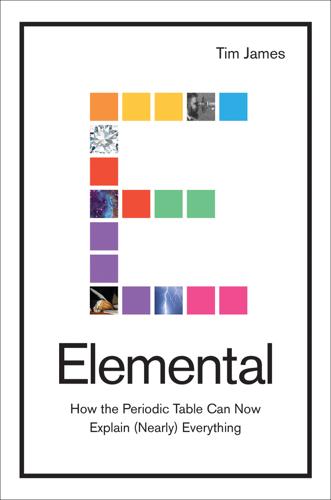
Elemental: How the Periodic Table Can Now Explain Everything
by
Tim James
Published 26 Mar 2019
There are lots of others with names like neutrinos, gluons, and Higgs bosons, but protons and neutrons are not on the list. It turns out that protons and neutrons themselves are not fundamental but can be thought of as three particles that are. A proton can’t be split in half but it can be described as being made up of thirds. Murray Gell-Mann named these particles quarks (pronounced “kworks” not “kwarks”). It still wouldn’t be right to say you can chop a proton into thirds, however, because they don’t actually let you do that. Quarks do not exist as individual things, but in little pairs and trios. If you were to take a proton, made from three quarks, and break it apart you wouldn’t end up with the three individual quarks, you’d end up with six … that’s quantum field theory, folks.
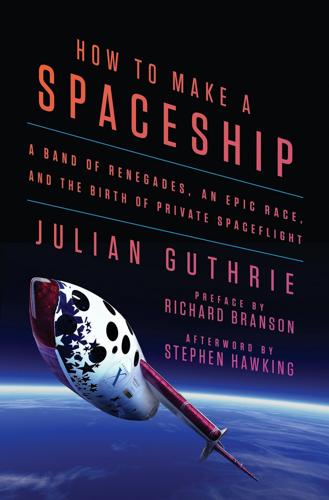
How to Make a Spaceship: A Band of Renegades, an Epic Race, and the Birth of Private Spaceflight
by
Julian Guthrie
Published 19 Sep 2016
He and his mom passed buildings 10 and 11 and stopped at building 8, the physics department. Created in the nineteenth century by MIT founder William Barton Rogers, the department had among its faculty and graduates a dazzling array of Nobel Prize winners and some of the field’s greatest minds, from Richard Feynman (quantum electrodynamics), Murray Gell-Mann (elementary particles), Samuel Ting and Burton Richter (subatomic particles), to Robert Noyce (Fairchild Semiconductor, Intel), Bill Shockley (field-effect transistors), George Smoot (cosmic microwave background radiation), and Philip Morrison (Manhattan Project, science educator). Physics classes at MIT had been flooded with students in the years following the launch of Sputnik and the success of Apollo.
…
The takeaway is that you want to burn as much as quickly as possible, and expel it as fast as possible. The faster you burn, the lighter the rocket gets, and the easier it is to change the velocity. *The entire Saturn rocket management team was composed of ex-V-2 engineers from Peenemünde. *The name “quark” was invented by Murray Gell-Mann, a colleague of Richard Feynman’s at Caltech, reputedly based on a quote from James Joyce’s book Finnegans Wake: “Three quarks for Muster Mark!” Gell-Mann wanted it pronounced as “quork.” The quark model unified in a single stroke the whole disorganized pile of miscellaneous particles that had been observed up until that time.
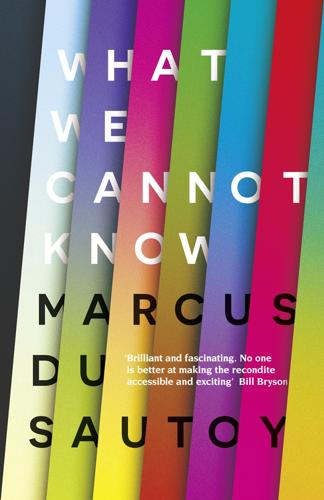
What We Cannot Know: Explorations at the Edge of Knowledge
by
Marcus Du Sautoy
Published 18 May 2016
This seemed rather strange. There appeared to be certain particles that encountered a barrier (represented in the figure by a broken line) that prevented them from crossing via the easy route to the lower valley. THERE IS NO EXQUISITE BEAUTY WITHOUT STRANGENESS The physicists Abraham Pais, Murray Gell-Mann and Kazuhiko Nishijima came up with a cunning strategy to solve this puzzle. They proposed a new property like charge that mediated the way these particles interacted or didn’t interact with the strong nuclear force. This new property, called strangeness, gave physicists a new way to classify all these new particles.
…
If I was going to get anywhere in my attempts to understand whether a God could hide in the equations of quantum physics, I needed to talk to someone who was as much at home in a laboratory as in a cathedral. So I made a trip to Cambridge. THE VEGETARIAN BUTCHER John Polkinghorne learned his physics at the feet of Paul Dirac in Cambridge and then with Richard Feynman and Murray Gell-Mann at Caltech. You can’t ask for better teachers than that. His research has, among other things, helped to confirm the existence of the quarks that many believe are the last step as I zoom in on my casino dice. Polkinghorne is back at his alma mater, so I arranged to meet him at his home in Cambridge.
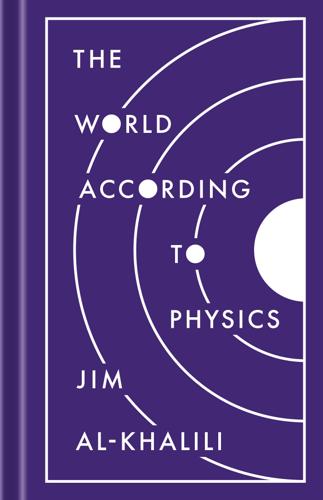
The World According to Physics
by
Jim Al-Khalili
Published 10 Mar 2020
I have sympathy for those who get frustrated by the searchers and the dreamers, who often work in esoteric areas like cosmology and string theory, for these are the people who think nothing of adding a few new dimensions here or there if it makes their maths prettier, or to hypothesise an infinity of parallel universes if it reduces the strangeness in ours. But there have been some famous examples of searchers who have struck gold. The twentieth-century genius Paul Dirac was a man driven by the beauty of his equations, which led him to postulate the existence of antimatter several years before it was discovered in 1932. Then there’s Murray Gell-Mann and George Zweig, who in the mid-1960s independently predicted the existence of quarks when there was no experimental evidence to suggest such particles existed. Peter Higgs had to wait half a century for his boson to be discovered and the theory that bears his name to be confirmed. Even the quantum pioneer Erwin Schrödinger came up with his eponymous equation with nothing more than inspired guesswork.
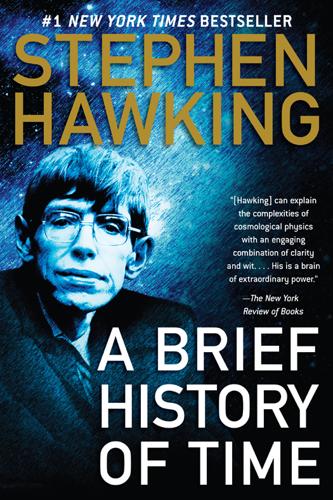
A Brief History of Time
by
Stephen Hawking
Published 16 Aug 2011
Up to about thirty years ago, it was thought that protons and neutrons were “elementary” particles, but experiments in which protons were collided with other protons or electrons at high speeds indicated that they were in fact made up of smaller particles. These particles were named quarks by the Caltech physicist Murray Gell-Mann, who won the Nobel Prize in 1969 for his work on them. The origin of the name is an enigmatic quotation from James Joyce: “Three quarks for Muster Mark!” The word quark is supposed to be pronounced like quart, but with a k at the end instead of a t, but is usually pronounced to rhyme with lark.
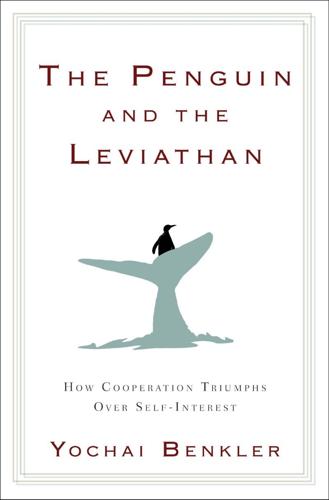
The Penguin and the Leviathan: How Cooperation Triumphs Over Self-Interest
by
Yochai Benkler
Published 8 Aug 2011
The audience stayed to the end and didn’t nod off: that’s one good sign; and the scientists didn’t seem to find too much to complain about either, which also may be a good sign. I was particularly fortunate to spend time with David Krakauer after the talk, who helped me think through and refine some of the points on evolutionary biology, and with Murray Gell-Mann, who didn’t seem to think I was bullshitting more than most. We’ll see.
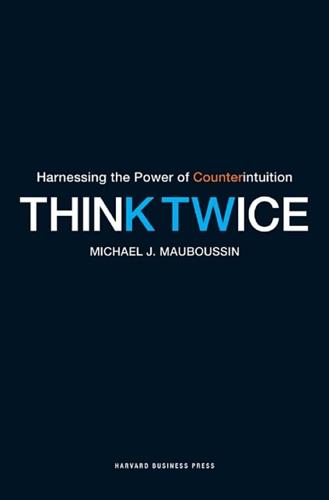
Think Twice: Harnessing the Power of Counterintuition
by
Michael J. Mauboussin
Published 6 Nov 2012
Seeley, The Wisdom of the Hive (Cambridge: Harvard University Press, 1995); and Steven Johnson, Emergence: The Connected Lives of Ants, Brains, Cities, and Software (New York: Scribner, 2001). 4. Thomas D. Seeley and P. Kirk Visscher, “Sensory Coding of Nest-site Value in Honeybee Swarms,” The Journal of Experimental Biology 211, no. 23 (2008): 3691–3697. 5. See John H. Holland, Hidden Order: How Adaptation Builds Complexity (Reading, MA: Helix Books, 1995); Murray Gell-Mann, The Quark and the Jaguar: Adventures in the Simple and the Complex (New York: W.H. Freeman, 1994); and John H. Miller and Scott E. Page, Complex Adaptive Systems: An Introduction to Computational Models of Social Life (Princeton, NJ: Princeton University Press, 2007). 6. P. W. Anderson, “More is Different,” Science 177, no. 4047 (1972): 393–396.

Scale: The Universal Laws of Growth, Innovation, Sustainability, and the Pace of Life in Organisms, Cities, Economies, and Companies
by
Geoffrey West
Published 15 May 2017
It was to combat this perceived trend that SFI was created. The early discussions of what the actual scientific agenda of the institute might be centered on the burgeoning fields of computer science, computation, and nonlinear dynamics, areas where Los Alamos had played a seminal role. Enter the theoretical physicist Murray Gell-Mann. He realized that all of these suggestions revolved more around techniques rather than ideas and concepts and that if such an institute was to have a major impact on the course of science, its agenda would have to be broader and bolder and address some of the big questions. Whence arose the idea of complexity and complex adaptive systems as overarching themes, since they encompass almost all of the major challenges and big questions facing science and society today—and, furthermore, they invariably cross traditional disciplinary boundaries.
…
In that context I would also like to thank the extended SFI community, both individually and collectively, for broadening my scientific horizons and helping me begin to understand some of the subtleties and challenges inherent in the study of complex adaptive systems. I would particularly like to mention Pablo Marquet, John Miller, Murray Gell-Mann, Juan Perez-Mercader, David Krakauer, Cormac McCarthy, and Bill Miller and Michael Mauboussin, past and present chairmen, respectively, of SFI’s board of trustees, all of whom have given me their unwavering enthusiastic support and encouragement over many years. I am deeply grateful and indebted to all of them.
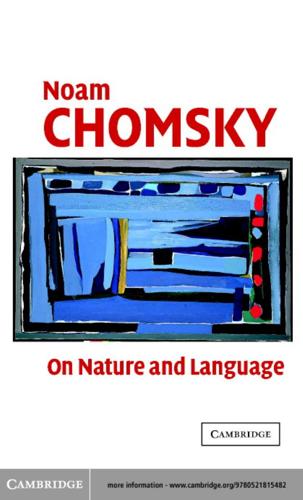
On Nature and Language
by
Noam Chomsky
Published 16 Apr 2007
So, for example, there is a standard joke in physics and mathematics that the only numbers are 1, 2, 3, and infinity; the others are too complicated, so if anything comes out, say, 7, or something like that, it is wrong. And in fact that actually shows up in scientific work. It showed up in the development of the theory of quarks, apparently: if I remember correctly, when Murray Gell-Mann and his associates were devising the theory, it turned out that they had evidence for seven quarks, but nobody was happy with that, because 7 is too ugly a number; so the assumption was that the picture must be reconstructed in terms of 2 and 3, which are nice numbers. And after further experimental work stimulated by that intuition, the prettier picture turned out to be true.
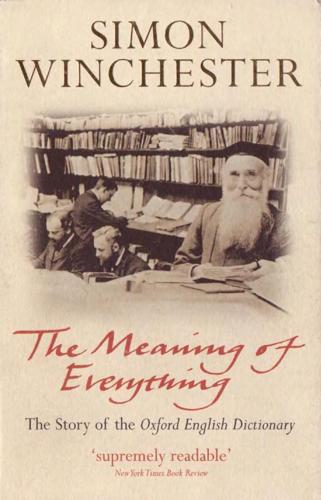
The Meaning of Everything: The Story of the Oxford English Dictionary
by
Simon Winchester
Published 1 Jan 2003
In the end, 50,000 words were added— including (as Burchfield wrote in his final Preface to Volume IV) several which their creators helped to define: Anthony Powell, for example, helped with acceptance world, A. J. Ayer with drogulus, Buckminster Fuller with Dymaxion, J. R. R. Tolkien—a former assistant and walrus expert—with hobbit, and the cosmologist Murray Gell-Mann with quark. Psychedelic, coined in 1957, but popular at the time that Volume III was being printed, made it, just in time. Robert Burchfield, the New Zealand-born lexicographer who created the four-volume supplement to the completed OED, which appeared between 1972 and 1986. He added a further 50,000 words to the amassment of the tongue.

Free as in Freedom
by
Sam Williams
Published 16 Nov 2015
As Stallman himself has said, the first misfortune was his graduation from Harvard. Eager to continue his studies in physics, Stallman enrolled as a graduate student at MIT. The choice of schools was a natural one. Not only did it give Stallman the chance to follow the footsteps of great MIT alumni: William Shockley ('36), Richard P. Feynman ('39), and Murray Gell-Mann ('51), it also put him two miles closer to the AI Lab and its new PDP-10 computer. "My attention was going toward programming, but I still thought, well, maybe I can do both," Stallman says. Toiling in the fields of graduate-level science by day and programming in the monastic confines of the AI Lab by night, Stallman tried to achieve a perfect balance.
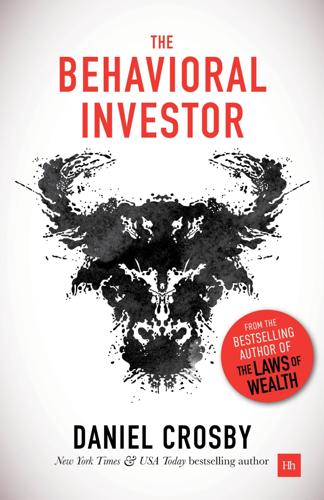
The Behavioral Investor
by
Daniel Crosby
Published 15 Feb 2018
We have reason to trust the intuition of a NICU nurse, a physicist or a mathematician, but very little reason believe the instincts of a therapist or stock picker (sadly, I am both). Such intuitive shortcomings are not the fault of the experts in question, but rather the discipline in which they ply their trade. As Murray Gell-Mann correctly noted, “Imagine how hard physics would be if electrons could think.” Intuition is powerful in many domains but ill suited to the vagaries of allocating capital. Understanding this to be the case, some investors learn all that they can about markets and seek to deploy that knowledge in good times and bad through the exercise of free will, our next area of consideration.
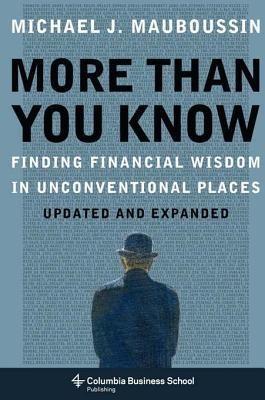
More Than You Know: Finding Financial Wisdom in Unconventional Places (Updated and Expanded)
by
Michael J. Mauboussin
Published 1 Jan 2006
.: Principia Press, 1941), 398-99. 2 For example, in log 10 the scale would be 101 (= 10), 102 (= 100), and 103 (= 1,000) versus the more familiar 10, 11, 12. 3 Richard Koch, The 80/20 Principle: The Secret to Success by Achieving More with Less (New York: Currency, 1998). 4 Rob Axtell, “Zipf ’s Law of City Sizes: A Microeconomic Explanation Far from Equilibrium,” presentation at a RAND workshop, Complex Systems and Policy Analysis: New Tools for a New Millennium, September 27-28, 2000, Arlington, Va. 5 These modifications are lucidly explained in Murray Gell-Mann, The Quark and the Jaguar: Adventures in the Simple and the Complex (New York: W. H. Freeman, 1994), 92-100. 6 Robert L. Axtell, “Zipf Distribution of U.S. Firm Sizes,” Science 293 (September 7, 2001): 1818-20; see http://www.sciencemag.org/content/vol293/issue5536/index.shtml. 7 These include self-organized criticality, highly optimized tolerance (HOT), and the Gibrat process.

Learning to Think: A Memoir
by
Tracy King
Published 12 Mar 2025
I counted dozens, and those were just the ones I could identify. There are others, but I don’t know how important any of them are. Most are typos, like road names or surnames, but it undermines confidence in the same way that the errors in the newspaper reports did. How can I know which bits to trust? Many years ago, I met the physicist Murray Gell-Mann. He had a Nobel Prize for physics, but those who don’t follow such things might know him better as ‘the string theory guy’. He wrote a book called The Quark and the Jaguar, which I liked a lot and understood less. I thought it would be nice to ask him to sign it, which he gladly did. But when I handed it over, he said, ‘Oh, this is the UK edition!
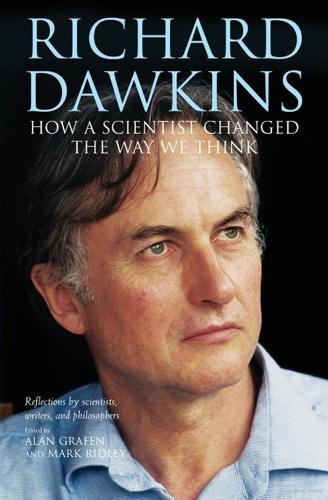
Richard Dawkins: How a Scientist Changed the Way We Think
by
Alan Grafen; Mark Ridley
Published 1 Jan 2006
Even as television gave up on many aspects of science, and newspapers retreated to covering technology, environmental scares, and popular psychology, the book trade was making stars of scientists. People like Richard Leakey, Jane Goodall, Carl Sagan, and Steven Pinker could fill the biggest lecture halls as Thomas Henry Huxley had once done. But booms usually end in busts and the boom in popular science publishing was no exception. The deflation began after the debacle of Murray Gell-Mann’s The Quark and the Jaguar (1994), which Brockman sold for an advance of $550,000 for American rights alone. Gell-Mann returned much of the advance after failing to complete the book as promised, though it did eventually come out. The next year the phenomenon was Longitude by Dava Sobel and narrative non-fiction, rather than argument, became all the rage.
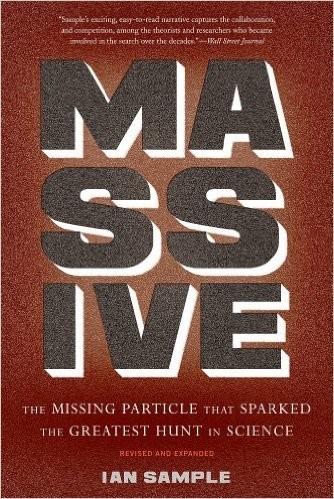
Massive: The Missing Particle That Sparked the Greatest Hunt in Science
by
Ian Sample
Published 1 Jan 2010
Scientists later discovered that protons and neutrons were not elementary particles of matter at all. Unlike the electron, protons and neutrons were made up of even smaller particles called quarks. It took a long time for physicists to accept that quarks were real, not least because no one had ever seen one. The American physicists Murray Gell-Mann and Georg Zweig first put forward the idea in 1964, though they hit on the theory separately.10 They realized that the behavior of protons and neutrons made sense if each contained a trio of quarks. The proposal was still contentious when Peter Higgs visited the Institute for Advanced Study in 1966.
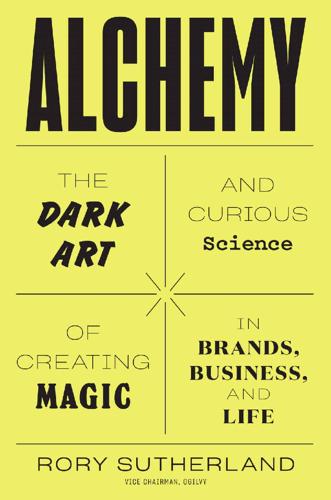
Alchemy: The Dark Art and Curious Science of Creating Magic in Brands, Business, and Life
by
Rory Sutherland
Published 6 May 2019
*In some ways, we need markets simply because prices are the only reliable means of getting consumers to tell the truth about what they want. *We all know people, I suspect, who though highly intelligent are insufferably inflexible in their approach to life. *Seriously good mathematicians are, as you would expect, much rarer than merely capable ones. *Co-authored with Murray Gell-Mann, who I can safely say is quite a good physicist, too, what with him getting a Nobel Prize and discovering quarks and all that. ‘Evaluating Gambles Using Dynamics’, Chaos (February 2016). *Presumably, the people who thought like economists all died out. *This explains why Amazon Prime needs to exist.

The Singularity Is Near: When Humans Transcend Biology
by
Ray Kurzweil
Published 14 Jul 2005
But if we can determine that the file (or a portion of the file) in fact represents pi, we can easily express it (or that portion of it) very compactly as "pi to one million bits of accuracy." Since we can never be sure that we have not overlooked some even more compact representation of an information sequence, any amount of compression sets only an upper bound for the complexity of the information. Murray Gell-Mann provides one definition of complexity along these lines. He defines the "algorithmic information content" (Ale) of a set of information as "the length of the shortest program that will cause a standard universal computer to print out the string of bits and then halt."4 However, Gell-Mann's concept is not fully adequate.
…
· Block-sorting compression, which reorganizes characters rather than using a code alphabet; run-length compression can then be used to compress the repeating strings (example: Burrows-Wheeler transform). · Prediction by partial mapping, which uses a set of symbols in the uncompressed file to predict how often the next symbol in the file appears. 4. Murray Gell-Mann, "What Is Complexity?" in Complexity, vol. 1 (New York: John Wiley and Sons, 1995). 5. The human genetic code has approximately six billion (about 1010) bits, not considering the possibility of compression. So the 1027 bits that theoretically can be stored in a one-kilogram rock is greater than the genetic code by a factor of 1017.

Physics in Mind: A Quantum View of the Brain
by
Werner Loewenstein
Published 29 Jan 2013
And the fact that what gets lost are quantum bits of information, rather than classical Shannon bits, underscores this point. Indeed, decoherence may well be the most fundamental irreversible process in nature. Why Our Weltanschauung Is So Narrow: An Unexpected Lesson for Philosophy The decoherence proposal has come a long way in the past few years and, in the hands of Zeh, Erich Joos, Wojciech Zurek, Murray Gell-Mann, Jim Hartle, and others, has grown into a comprehensive theory. It is a theory that leaves hardly anything untouched, and not just physics. Its reach goes well beyond, to what once was the domain of philosophers: epistemology, the theory of knowledge. This brings us back to our center of interest, the issue of whether the quantum wave gets entangled with consciousness.
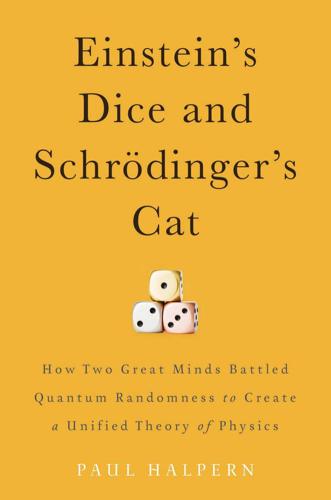
Einstein's Dice and Schrödinger's Cat: How Two Great Minds Battled Quantum Randomness to Create a Unified Theory of Physics
by
Paul Halpern
Published 13 Apr 2015
By then, so many new elementary particles had been discovered that choosing which fermions to label as fundamental proved critical. Most physicists suspected that protons and neutrons were not fundamental but instead were made up of constituents. The subcomponents were at first called different things, but eventually the physics community settled on the term “quarks,” chosen by Murray Gell-Mann for the way it sounded to him. He spotted the word in a passage from James Joyce’s Finnegans Wake, “Three quarks for Muster Mark.” As there are three quarks each in protons and neutrons (and in all particles in the category called baryons), the moniker seemed appropriate. Once quarks were catalogued, they seemed to fall into distinct families, called generations.
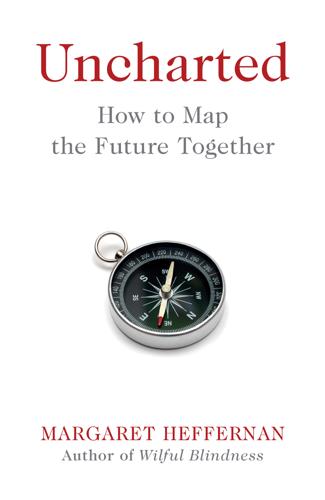
Uncharted: How to Map the Future
by
Margaret Heffernan
Published 20 Feb 2020
It should last, he thinks, only as long as there are big questions it could answer. He’d often debated with his colleagues when they would know if high-energy physics was finished as a worthwhile field to work in. He believed that would be only when it ceased to attract first-class minds. His colleague, Murray Gell-Mann, thought it would be when the science became predictable. The two were really agreeing with each other: that the field will no longer matter when it isn’t complex, ambiguous, uncertain or difficult enough. At the Wellcome Sanger Institute, Julia Wilson and her colleagues contemplate sequencing the genome of every living thing on the planet, a scientific odyssey that may hold the key to life on earth.
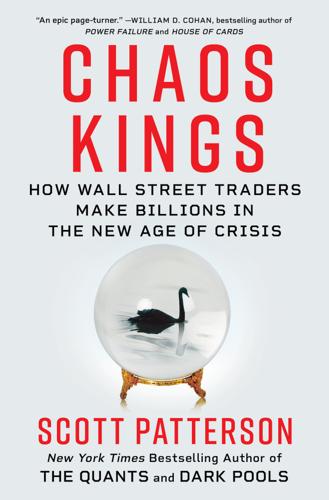
Chaos Kings: How Wall Street Traders Make Billions in the New Age of Crisis
by
Scott Patterson
Published 5 Jun 2023
his literary agent and the organizer of the proceedings, John Brockman, had written: Here’s some specifics re: the agenda: FRIDAY NIGHT 6pm Cocktails—Mezzanine Level 7pm Dinner—Mezzanine Level—Studio 5 SATURDAY MORNING 7:30 Breakfast Mezzanine Level—Studio 4 8:30 Depart by bus to Space X (about 20–30 minutes) To accommodate Craig Venter who can only arrive at Space X in the afternoon, if possible, I will move Elon Musk’s talk and tour of the facility to 4pm, instead of during the lunch break. 7:30 Dinner—Spago 176 N Canon Dr Beverly Hills, CA 90210 With the blockbuster success of The Black Swan, Taleb had gained entry into one of the most elite intellectual salons in America, Brockman’s Edge Foundation, an informal collection of (mostly male) scientists and thinkers that included Richard Dawkins, Steven Pinker, Danny Kahneman, and Murray Gell-Mann (discoverer of the quark) as well as tycoons such as Google founders Sergey Brin and Larry Page, Amazon’s Jeff Bezos, Microsoft’s Bill Gates, and future disgraced financier Jeffrey Epstein. The idea behind the salon was simple: put a bunch of smart people together in a room, have them talk, and see what comes out on the other end.

The Cancer Chronicles: Unlocking Medicine's Deepest Mystery
by
George Johnson
Published 26 Aug 2013
He lives in Santa Fe, New Mexico, and can be found on the Web at talaya.net. ALSO BY GEORGE JOHNSON The Ten Most Beautiful Experiments Miss Leavitt’s Stars: The Untold Story of the Woman Who Discovered How to Measure the Universe A Shortcut Through Time: The Path to the Quantum Computer Strange Beauty: Murray Gell-Mann and the Revolution in Twentieth-Century Physics Fire in the Mind: Science, Faith, and the Search for Order In the Palaces of Memory: How We Build the Worlds Inside Our Heads Machinery of the Mind: Inside the New Science of Artificial Intelligence Architects of Fear: Conspiracy Theories and Paranoia in American Politics
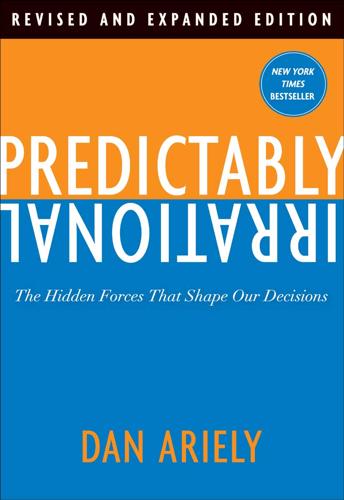
Predictably Irrational, Revised and Expanded Edition: The Hidden Forces That Shape Our Decisions
by
Dan Ariely
Published 19 Feb 2007
I also hope that I have been able to share with you my enthusiasm for the study of rationality and irrationality. In my opinion, studying human behavior is a fantastic gift because it helps us better understand ourselves and the daily mysteries we encounter. Although the topic is important and fascinating, it is not easy to study, and there is still a lot of work ahead of us. As the Nobel laureate Murray Gell-Mann once said, “Think how hard physics would be if particles could think.” Irrationally yours, Dan Ariely PS: If you want to participate in this journey, log on to www.predictablyirrational.com, sign up for a few of our studies, and leave us your ideas and thoughts. Reflections and Anecdotes about Some of the Chapters Reflections on Dating and Relativity (Chapter 1) In Chapter 1, on relativity, I offered some dating advice.
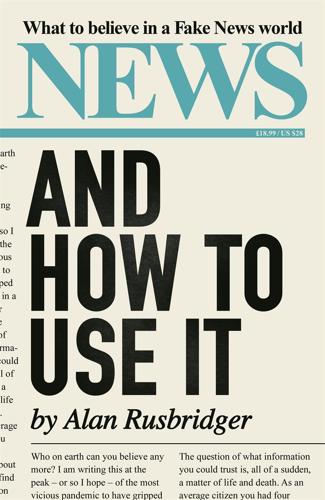
News and How to Use It: What to Believe in a Fake News World
by
Alan Rusbridger
Published 26 Nov 2020
NEWS AMNESIA The syndrome – familiar to us all – that when journalists write about something we actually know about, we may find it superficial or actively misleading. And yet we continue to read journalism about other people and subjects with our scepticism suspended. The novelist and director Michael Crichton described the habit in 2002, even naming it after the particle physicist, Murray Gell-Mann: ‘Briefly stated, the Gell-Mann Amnesia effect is as follows. You open the newspaper to an article on some subject you know well . . . You read the article and see the journalist has absolutely no understanding of either the facts or the issues. Often, the article is so wrong it actually presents the story backward – reversing cause and effect.

The Undoing Project: A Friendship That Changed Our Minds
by
Michael Lewis
Published 6 Dec 2016
There were—for starters—the stories about the funny things Amos had said, usually directed at people whom he found full of themselves. He had listened to an American economist talk about how so-and-so was stupid and so-and-so was a fool, then said, “All your economic models are premised on people being smart and rational, and yet all the people you know are idiots.” He’d heard Murray Gell-Mann, a Nobel laureate in physics, hold forth on seemingly every subject under the sun. After Gell-Man was done, Amos said, “You know, Murray, there is no one in the world who is as smart as you think you are.” Once, after Amos gave a talk, an English statistician had approached him. “I don’t usually like Jews but I like you,” the statistician said.
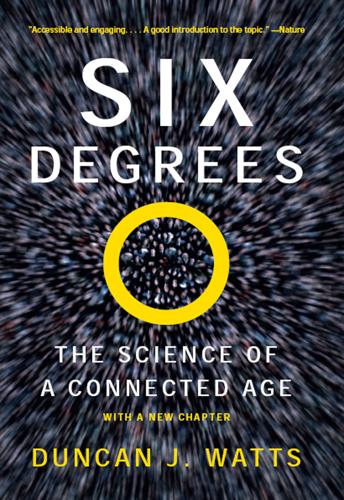
Six Degrees: The Science of a Connected Age
by
Duncan J. Watts
Published 1 Feb 2003
Gueorgi Kossinets provided invaluable assistance in preparing the many figures, and Mary Babcock did a fantastically thorough job of copy editing. At a more general level, I am deeply grateful to a number of people at Columbia University—Peter Bearman, Mike Crowe, Chris Scholz, and David Stark—as well as Murray Gell-Mann, Ellen Goldberg, and Erica Jen at the Santa Fe Institute and Andrew Lo at MIT for giving me the freedom and support to pursue my selfish interests, even sometimes at questionable benefit to their own. The National Science Foundation (under grant 0094162), Intel Corporation, the Santa Fe Institute, and the Columbia Earth Institute have provided critical financial support to my teaching and research, as well as to a series of seminal workshops in Santa Fe and New York, out of which numerous collaborations and projects have sprung.

Human Frontiers: The Future of Big Ideas in an Age of Small Thinking
by
Michael Bhaskar
Published 2 Nov 2021
As with his contemporary, Pasteur, it's difficult to imagine any individual or team, perhaps even any institution, having a proportionate impact today: not just one big idea, but reams of them, again and again entirely reorienting disciplines and worldviews. Even giants of mid-to-late twentieth century physics, field-shapers like Richard Feynman or Murray Gell-Mann, couldn't have such universal impact. Will it ever again be possible for one researcher to alter the nature and trajectory of their field so profoundly, as Darwin, Pasteur, and later Freud, Poincaré, Turing or Einstein did? So far it looks like yet another example of the breakthrough problem.
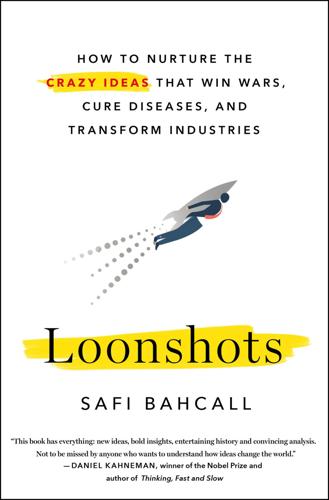
Loonshots: How to Nurture the Crazy Ideas That Win Wars, Cure Diseases, and Transform Industries
by
Safi Bahcall
Published 19 Mar 2019
Phil Anderson, mentioned earlier, showed that symmetry-breaking associated with those electron pairs explains why electrical resistance falls to exactly zero. A handful of particle physicists applied Anderson’s ideas to solve another long-standing mystery: how we should think about the origin of mass in the universe. They jointly came up with the idea for what is now called the Higgs boson. (Murray Gell-Mann, who coined the term “quark” and helped create the standard model of particle physics, for which he earned the 1969 Nobel Prize, has argued it should be called the Anderson-Higgs boson.) Histories of superconductivity: Schmalian; Cooper. Popular histories of the Higgs search: Carroll, 135–62; Gell-Mann, 193–94; and Lederman.

Dawn of the New Everything: Encounters With Reality and Virtual Reality
by
Jaron Lanier
Published 21 Nov 2017
Recent immigrants from Africa walking in the land of cars, purchases from electronics stores balanced on their heads, looking as out of place as I was. Cynthia, my obsession, turned out to be the daughter of the head of the physics department at Caltech. So that’s where we would hang out. She was the darling of the marvelous minds who huddled there, like Richard Feynman and Murray Gell-Mann. I was never a student at Caltech, but rather the weird boyfriend of the department head’s charming daughter. It’s a kind of status. Feynman was generous with me, showing me how to form geometrical designs with one’s fingers to think about chirality; things like that. He was also a fun drummer and we’d play.
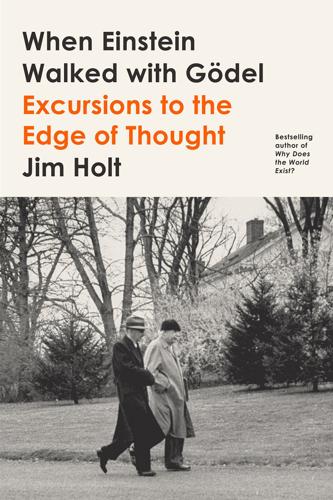
When Einstein Walked With Gödel: Excursions to the Edge of Thought
by
Jim Holt
Published 14 May 2018
Others think that nonlocality, though perhaps a little spooky on the face of it, is nothing to get metaphysically exercised over, since it “still follows the ordinary laws of cause and effect” (the physicist Lawrence Krauss). Still others—notwithstanding Bell and the subsequent experiments—deny that the world genuinely contains nonlocal connections. Prominent among them is the Nobel laureate Murray Gell-Mann, who insists that all the talk of “action at a distance” amounts to a “flurry of flapdoodle.” There is nothing financial or personal about this disagreement over nonlocality. It is (to quote the science writer George Musser) “intellectually pure.” And if it seems stubbornly unresolvable, that may be because it goes to a deeper issue: Just what should we expect from physics—a recipe for making predictions or a unified picture of reality?
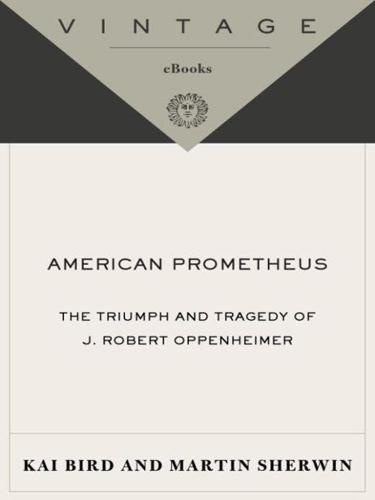
American Prometheus: The Triumph and Tragedy of J. Robert Oppenheimer
by
Kai Bird
and
Martin J. Sherwin
Published 18 Dec 2007
That year he was nominated for the Nobel Prize in physics—but the Nobel committee evidently hesitated to give the award to someone whose name was so closely associated with Hiroshima and Nagasaki. Over the next four years, he published three more short physics papers and one paper on biophysics. But after 1950, he never published another scientific paper. “He didn’t have Sitzfleisch,” said Murray Gell-Mann, a visiting physicist at the Institute in 1951. “Perseverance, the Germans call it Sitzfleisch, ‘sitting flesh,’ when you sit on a chair. As far as I know, he never wrote a long paper or did a long calculation, anything of that kind. He didn’t have patience for that; his own work consisted of little aperçus, but quite brilliant ones.
…
, pp. 151. 385 “He [Oppenheimer] was out to humiliate”: Ibid., p. 152. 385 Academic politics can: Stern, “A History of the Institute for Advanced Study, 1930–1950,” pp. 667–69, unpublished manuscript, IAS Archives. 386 “He really flattened me”: Dyson, interview by Sherwin, 2/16/84, p. 17. 386 Abraham Pais recalled: Pais, A Tale of Two Continents, p. 240. 386 “I meant, will you explain”: Bernstein, Oppenheimer, pp. 184–85. 386 “air of hauteur”: Pais, A Tale of Two Continents, p. 241. 387 “Tea is where”: Wheeler, Geons, Black Holes, and Quantum Foam, p. 25. 387 “The best way to send”: Time, 11/8/48, p. 81. 387 “The young physicists”: Barnett, “J. Robert Oppenheimer,” Life, 10/10/49. 387 “I have been observing”: Dyson, Disturbing the Universe, p. 73; John Manley, interview by Sherwin, 1/9/85, p. 27. 387 “Fireballs, fireballs!”: Murray Gell-Mann, The Quark and the Jaguar, p. 287. 388 “came down on me”: Dyson, Disturbing the Universe, pp. 55, 73–74. 388 “so much deeper”: Dyson, interview by Sherwin, 2/16/84, p. 3. 388 “conquer the Demon”: Dyson, Disturbing the Universe, p. 80. 388 “incomprehensibility can be mistaken”: Dyson, interview by Sherwin, 2/16/84, p. 5. 388 “Science’s sense of guilt”: Time, 2/23/48, p. 94. 388 “That sort of crap”: Rabi, interview by Sherwin, 3/12/82, p. 11. 388 “Scientists aren’t responsible”: Barnett, “J.
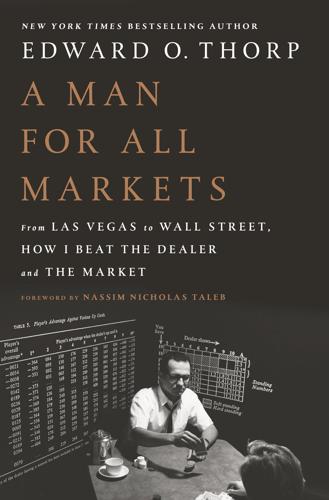
A Man for All Markets
by
Edward O. Thorp
Published 15 Nov 2016
And there is a dialectic between you and your P/L: You start betting small (a proportion of initial capital) and your risk control—the dosage—also controls your discovery of the edge. It is like trial and error, by which you revise both your risk appetite and your assessment of your odds one step at a time. Academic finance, as has been recently shown by Ole Peters and Murray Gell-Mann, did not get the point that avoiding ruin, as a general principle, makes your gambling and investment strategy extremely different from the one that is proposed by the academic literature. As we saw, academics are paid by administrators via colleagues to make life complicated, not simpler. They invented something useless called utility theory (tens of thousands of papers are still waiting for a real reader).

Physics of the Future: How Science Will Shape Human Destiny and Our Daily Lives by the Year 2100
by
Michio Kaku
Published 15 Mar 2011
I would like to thank some of these pioneers and trailblazers: Eric Chivian, Nobel laureate, Center for Health and the Global Environment, Harvard Medical School Peter Doherty, Nobel laureate, St. Jude Children’s Research Hospital Gerald Edelman, Nobel laureate, Scripps Research Institute Murray Gell-Mann, Nobel laureate, Santa Fe Institute and Caltech Walter Gilbert, Nobel laureate, Harvard University David Gross, Nobel laureate, Kavli Institute for Theoretical Physics the late Henry Kendall, Nobel laureate, MIT Leon Lederman, Nobel laureate, Illinois Institute of Technology Yoichiro Nambu, Nobel laureate, University of Chicago Henry Pollack, Nobel laureate, University of Michigan Joseph Rotblat, Nobel laureate, St.
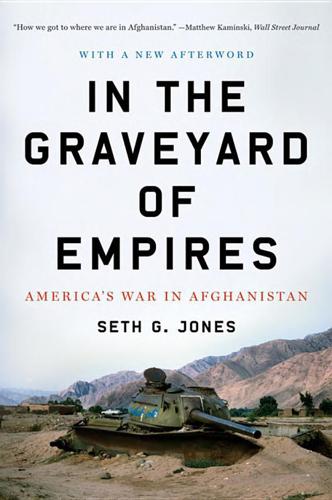
In the Graveyard of Empires: America's War in Afghanistan
by
Seth G. Jones
Published 12 Apr 2009
Thom Shanker, “Gates Decides Against Marines’ Offer to Leave Iraq for Afghanistan,” New York Times, December 6, 2007, p. A16. Chapter Thirteen 1. PBS Frontline, “The Return of the Taliban,” Written, produced, and reported by Martin Smith. Airdate: October 3, 2006. 2. See, for example, Murray Gell-Mann, The Quark and the Jaguar (New York: Henry Holt and Company, 1994); John Holland, Hidden Order (Reading, MA: Addison-Wesley, 1995); Kevin Dooley, “A Complex Adaptive Systems Model of Organization Change,” Nonlinear Dynamics, Psychology, and Life Science, vol. 1, no. 1, 1997, pp. 69–97. 3. Author interview with Commander Larry Legree, June 10, 2008. 4.
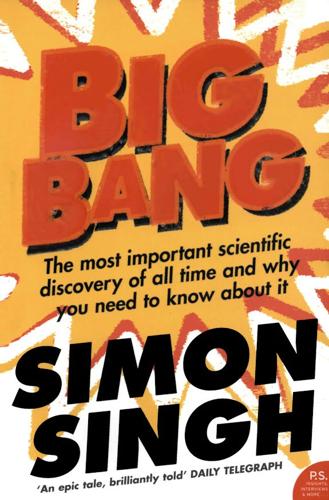
Big Bang
by
Simon Singh
Published 1 Jan 2004
Snowball Earth Gabrielle Walker A great detective story about a hitherto unknown period of Earth’s history. The Fifth Miracle Paul Davies How did life get started? Davies looks at the latest ideas and breakthroughs. Strange Beauty George Johnson A highly readable biography of Murray Gell-Mann, one of the great physicists of the twentieth century. The Cogwheel Brain Doron Swade The heroic tale of Charles Babbage, a Victorian genius who tried to build a mechanical computer. Find Out More Websites selected by Simon Singh http://map.gsfc.nasa.gov/m_uni.html This NASA website offers a tutorial, Cosmology 101, that covers everything from the development of the core Big Bang model to the latest ideas and observations.
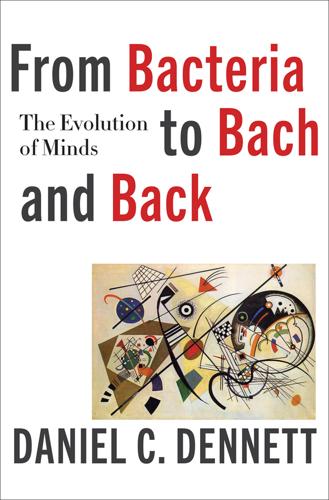
From Bacteria to Bach and Back: The Evolution of Minds
by
Daniel C. Dennett
Published 7 Feb 2017
These include the participants in the Santa Fe Institute working group I organized on cultural evolution in May of 2014: Sue Blackmore, Rob Boyd, Nicolas Claidière, Joe Henrich, Olivier Morin, Pete Richerson, Peter Godfrey-Smith, Dan Sperber, and Kim Sterelny, as well as others at SFI: especially Chris Wood, Tanmoy Bhattacharya, David Wolpert, Cris Moore, Murray Gell-Mann, and David Krakauer. I would also like to express my gratitude to Louis Godbout of the Sybilla Hesse Foundation, for supporting the workshop. Then there are my Tufts students and auditors who participated in a seminar in the spring of 2015 that went through most of the chapters in early drafts: Alicia Armijo, Edward Beuchert, David Blass, Michael Dale, Yufei Du, Brendan Fleig-Goldstein, Laura Friedman, Elyssa Harris, Justis Koon, Runeko Lovell, Robert Mathai, Jonathan Moore, Savannah Pearlman, Nikolai Renedo, Tomas Ryan, Hao Wan, Chip Williams, Oliver Yang, and Daniel Cloud, who visited the seminar to discuss his new book.

Hunting in the Shadows: The Pursuit of Al Qa'ida Since 9/11: The Pursuit of Al Qa'ida Since 9/11
by
Seth G. Jones
Published 29 Apr 2012
Lawrence (New York, Doubleday, Doran, 1939), p. 610. 34 Philip Mudd, interview with author, August 8, 2011. 35 U.S. government official, interview with author, July 5, 2011. 36 Christina Lamb, “Airstrike Misses Al-Qaeda Chief,” Times (London), January 15, 2006. 37 Ayman al-Zawahiri, video message to Bush, American people, January 2006. 38 National Intelligence Council, The Terrorist Threat to the Homeland, p. 1. 39 See, for example, Murray Gell-Mann, The Quark and the Jaguar (New York: Holt, 1994); John Holland, Hidden Order (Reading, Mass.: Addison-Wesley, 1995); Kevin Dooley, “A Complex Adaptive Systems Model of Organization Change,” Nonlinear Dynamics, Psychology, and Life Science 1, no. 1 (1997): 69–97. 40 Bruce Hoffman, Inside Terrorism, rev. ed.
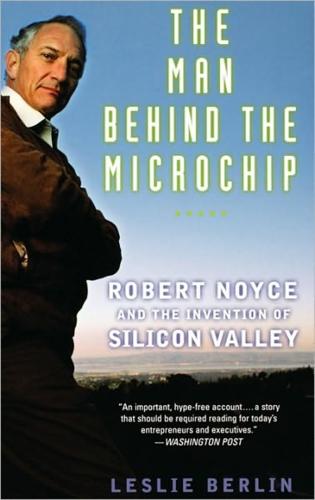
The Man Behind the Microchip: Robert Noyce and the Invention of Silicon Valley
by
Leslie Berlin
Published 9 Jun 2005
By the time Noyce came to campus, some of the best-known physicists in the world— nuclear physicists Herman Feshbach and Victor Weisskopf, microwave physicist Nathaniel Frank, acoustics and operations research pioneer Philip Morse—were members of the faculty. The department was also home to the most famous graduate student in America, Murray Gell-Mann, who had arrived a year before Noyce. A prodigy who taught himself calculus at age seven and began studying physics at Yale just a few weeks shy of his fifteenth birthday, Gell-Mann would emerge with his PhD in quantum theory after only two years in the program. He was one of two students in graduate school with Noyce who would one day win the Nobel Prize for Physics.

The Bill Gates Problem: Reckoning With the Myth of the Good Billionaire
by
Tim Schwab
Published 13 Nov 2023
Gates disputed all of these findings. News outlets also reported that Gates had been using Epstein as a conduit to get close to the Nobel Peace Prize. There is some compelling evidence to support this allegation. Epstein had relationships with former Nobel winners like Frank Wilczek, Gerald Edelman, and Murray Gell-Mann. He also had a relationship with a think tank called the International Peace Institute (IPI), which had received donations from charitable foundations linked to Epstein. In 2013, Epstein, Gates, and representatives of IPI met with Thorbjørn Jagland, the former prime minister of Norway and, at the time, the chair of the committee that awards the Nobel Peace Prize.
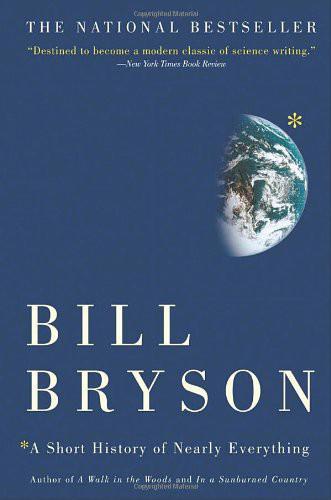
A Short History of Nearly Everything
by
Bill Bryson
Published 5 May 2003
To read even an elementary guide to particle physics nowadays you must now find your way through lexical thickets such as this: “The charged pion and antipion decay respectively into a muon plus antineutrino and an antimuon plus neutrino with an average lifetime of 2.603 x 10-8 seconds, the neutral pion decays into two photons with an average lifetime of about 0.8 x 10-16 seconds, and the muon and antimuon decay respectively into . . .” And so it runs on—and this from a book for the general reader by one of the (normally) most lucid of interpreters, Steven Weinberg. In the 1960s, in an attempt to bring just a little simplicity to matters, the Caltech physicist Murray Gell-Mann invented a new class of particles, essentially, in the words of Steven Weinberg, “to restore some economy to the multitude of hadrons”—a collective term used by physicists for protons, neutrons, and other particles governed by the strong nuclear force. Gell-Mann's theory was that all hadrons were made up of still smaller, even more fundamental particles.
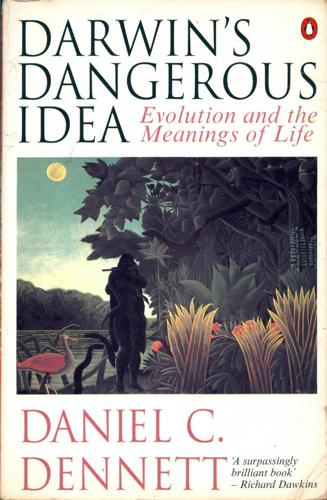
Darwin's Dangerous Idea: Evolution and the Meanings of Life
by
Daniel C. Dennett
Published 15 Jan 1995
(And if you can't write a good book about evolution witii the help of this sterling group of editors, you should give up!) Many others answered crucial questions, and clarified my thinking in {14} dozens of conversations: Ron Amundsen, Robert Axelrod, Jonathan Bennett, Robert Brandon, Madeline Caviness, Tim Clutton-Brock, Leda Cosmides, Helena Cronin, Arthur Danto, Mark De Voto, Marc Feldman, Murray Gell-Mann, Peter Godfrey-Smith, Steve Gould, Danny Hillis, John Holland, Alastair Houston, David Hoy, Bredo Johnsen, Stu Kauffman, Chris Langton, Dick Lewontin, John Maynard Smith, Jim Moore, Roger Penrose, Joanne Phillips, Robert Richards, Mark and Matt (the Ridley conspecifics), Dick Schacht, Jeff Schank, Elliot Sober, John Tooby, Robert Trivers, Peter Van Inwagen, George Williams, David Sloan Wilson, Edward O.
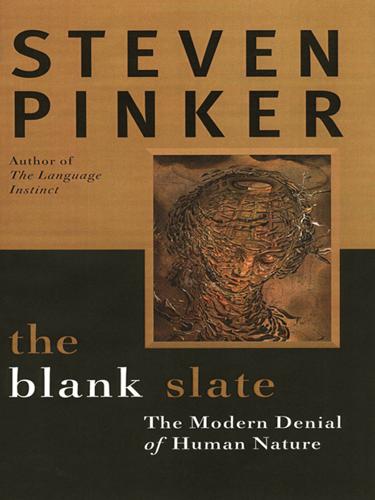
The Blank Slate: The Modern Denial of Human Nature
by
Steven Pinker
Published 1 Jan 2002
It’s impossible to stop thinking thoughts that are literally incoherent, such as “What was it like before the Big Bang?” or “What lies beyond the edge of the universe?” or “How does the damn particle manage to pass through two slits at the same time?” Even the physicists who discovered the nature of reality claim not to understand their theories. Murray Gell-Mann described quantum mechanics as “that mysterious, confusing discipline which none of us really understands but which we know how to use.”58 Richard Feynman wrote, “I think I can safely say that no one understands quantum mechanics…. Do not keep asking yourself, if you can possibly avoid it, ‘But how can it be like that?’
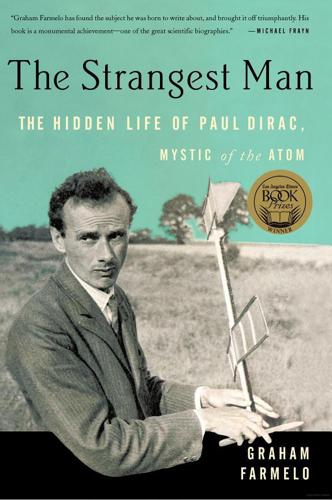
The Strangest Man: The Hidden Life of Paul Dirac, Mystic of the Atom
by
Graham Farmelo
Published 24 Aug 2009
The barrel-chested Kapitza, standing by a blackboard and easel, pointed out that it was now odds-on that experimenters would soon observe the effect; the question was: would Dirac and Kapitza be alive to see it?28 A few days after the Kapitzas left Cambridge, Dirac switched his attention from the past to the future. He attended an entire course of lectures on modern particle physics given by the American theoretician Murray Gell-Mann, a source of many of the most productive new ideas in particle physics since the early 1950s. Then thirty-six and still at the height of his powers, he was admired for his imagination and technical brilliance but feared for his waspish tongue and disliked for his egoism, not least by Dirac.29 In the 1960s, Gell-Mann and others suggested that strongly interacting particles could be classified in mathematical patterns, and he used one of them in 1963 to predict the existence of a new particle.

How the Mind Works
by
Steven Pinker
Published 1 Jan 1997
If there are abstract principles that govern whether a web of interacting parts (molecules, genes, cells) has such properties, natural selection would have to work within those principles, just as it works within other constraints of physics and mathematics like the Pythagorean theorem and the law of gravitation. But many readers have gone much further and conclude that natural selection is now trivial or obsolete, or at best of unknown importance. (Incidentally, the pioneers of complexity theory themselves, such as Kauffman and Murray Gell-Mann, are appalled by that extrapolation.) This letter to the New York Times Book Review is a typical example: Thanks to recent advances in nonlinear dynamics, nonequilibrium thermodynamics and other disciplines at the boundary between biology and physics, there is every reason to believe that the origin and evolution of life will eventually be placed on a firm scientific footing.
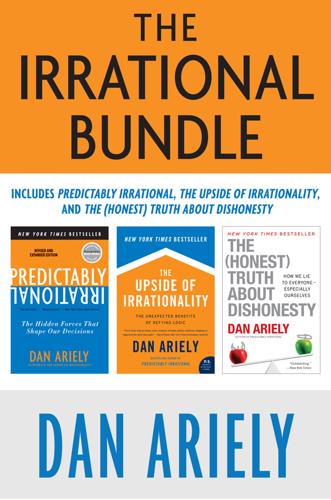
The Irrational Bundle
by
Dan Ariely
Published 3 Apr 2013
I also hope that I have been able to share with you my enthusiasm for the study of rationality and irrationality. In my opinion, studying human behavior is a fantastic gift because it helps us better understand ourselves and the daily mysteries we encounter. Although the topic is important and fascinating, it is not easy to study, and there is still a lot of work ahead of us. As the Nobel laureate Murray Gell-Mann once said, “Think how hard physics would be if particles could think.” Irrationally yours, Dan Ariely PS: If you want to participate in this journey, log on to www.predictablyirrational.com, sign up for a few of our studies, and leave us your ideas and thoughts. Thanks Over the years I have been fortunate to work on joint research projects with smart, creative, generous individuals.
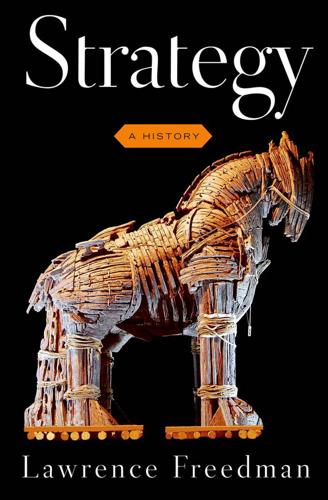
Strategy: A History
by
Lawrence Freedman
Published 31 Oct 2013
Boyd was widely read in the scientific literature of the time and picked up easily on developing theories which used simple propositions to explain complex phenomena. From these he drew language and insights to describe the sort of conflicts that interested him. From Norbert Wiener’s cybernetics to Murray Gell-Mann’s complexity theory emerged some core themes about the interaction of parts within systems, adaptation to changing environments, and outcomes that seemed indeterminate but were not beyond explanation. The conclusions for practical strategists that emerged from these theories rarely did justice to the elegance of the originals, and could lead to the suspicion that the main result was to develop more impressive language for matters that were already well understood.